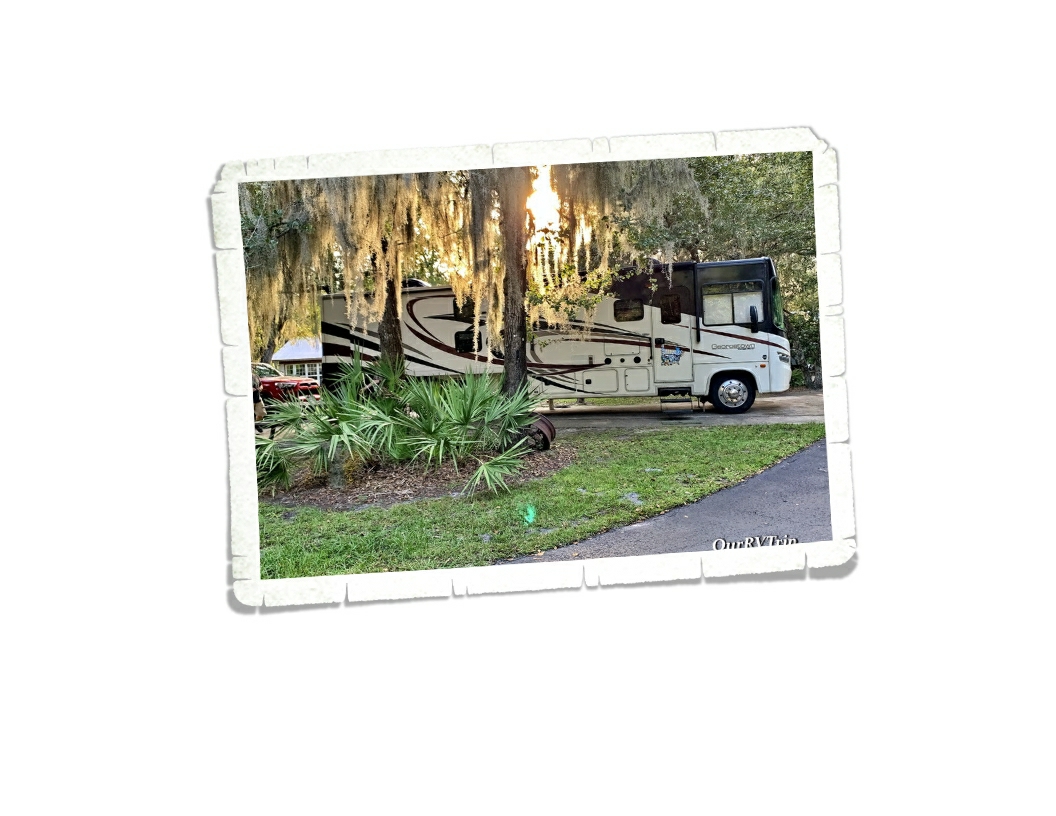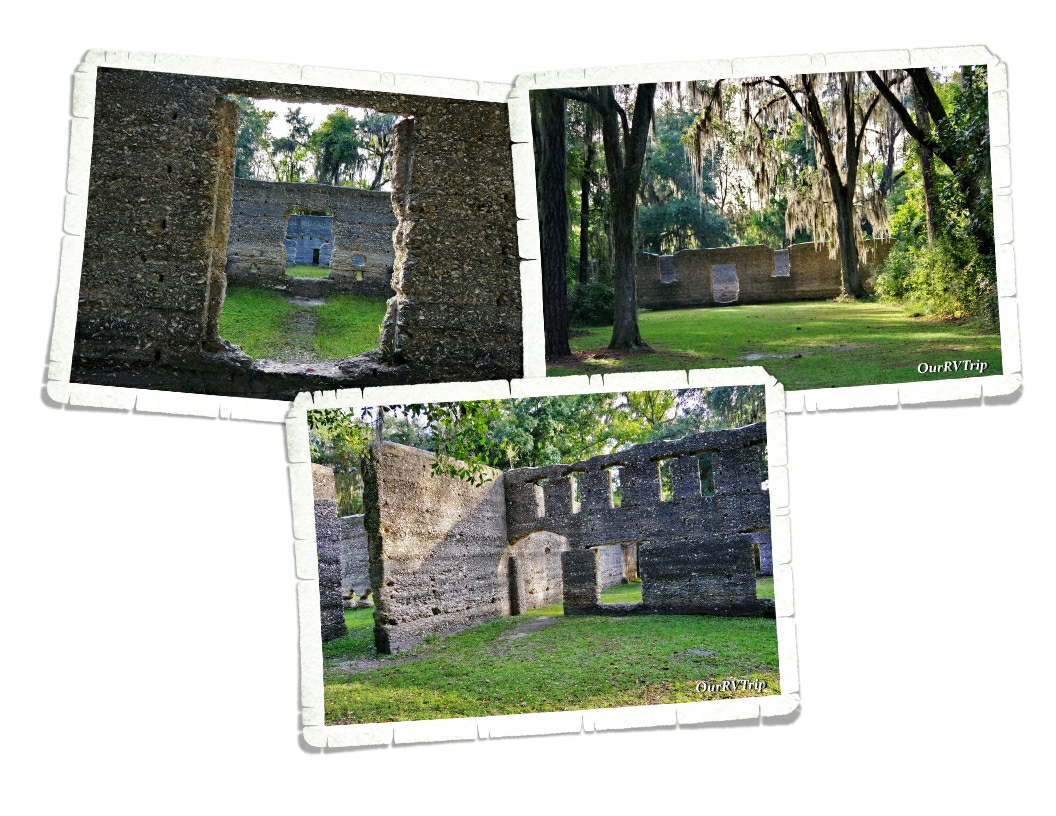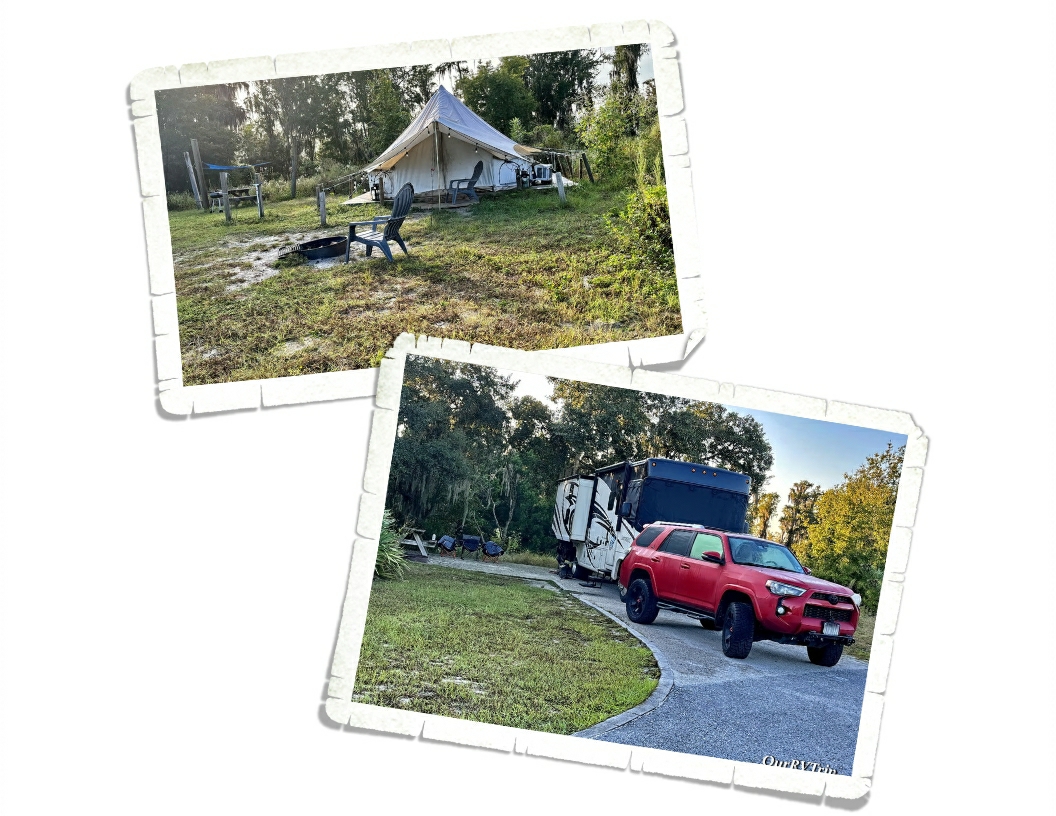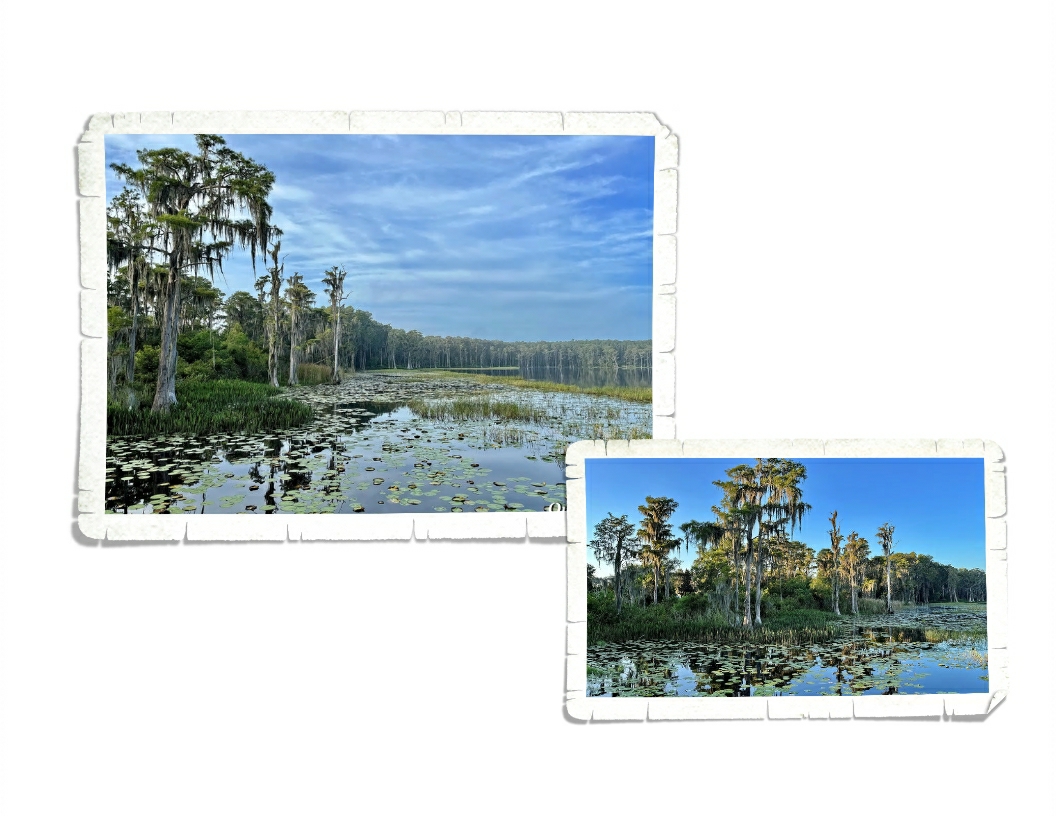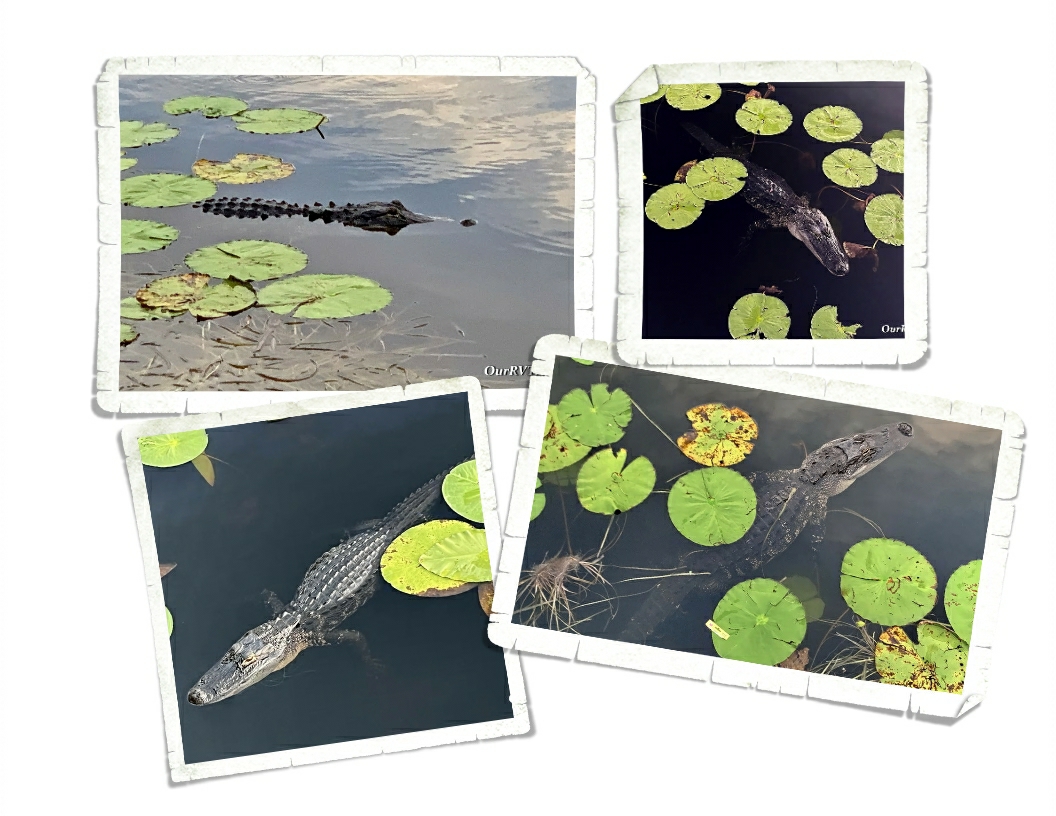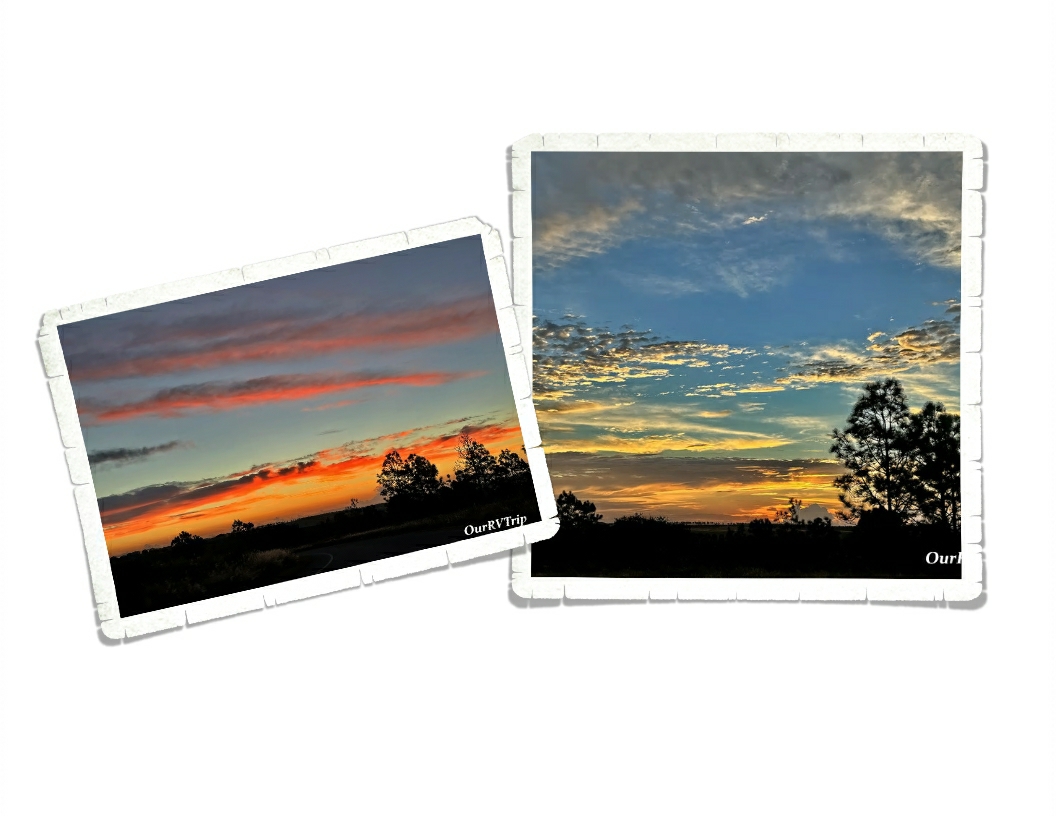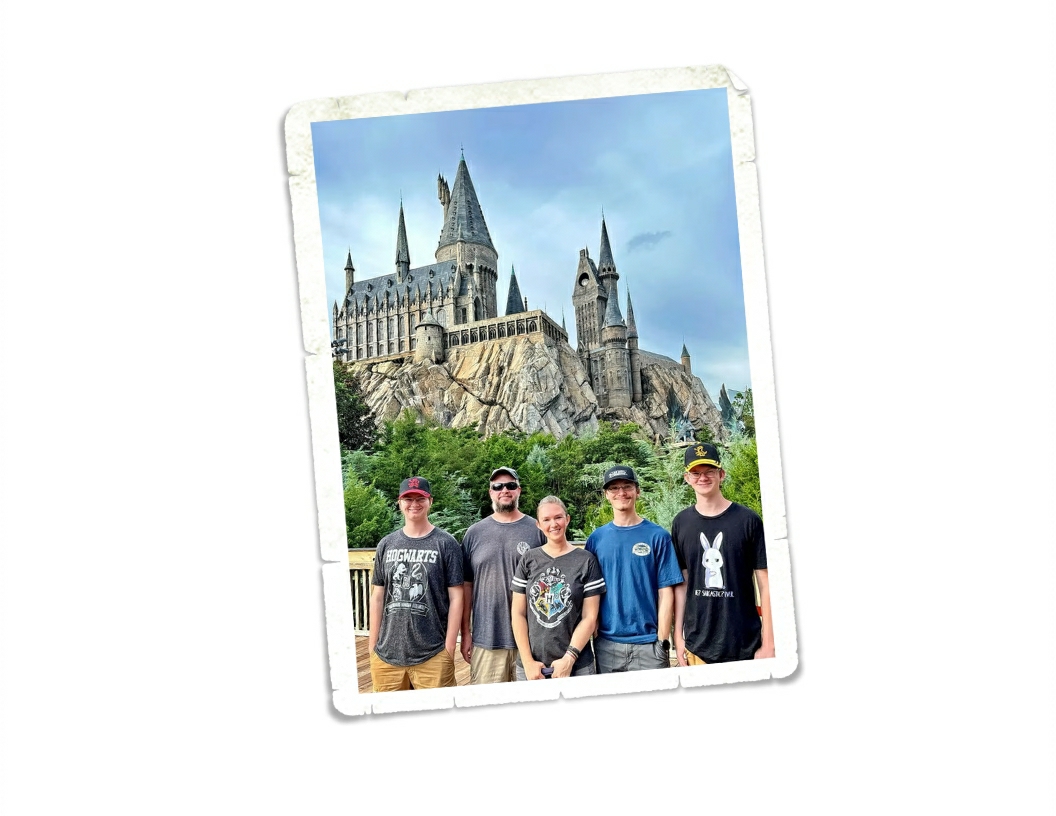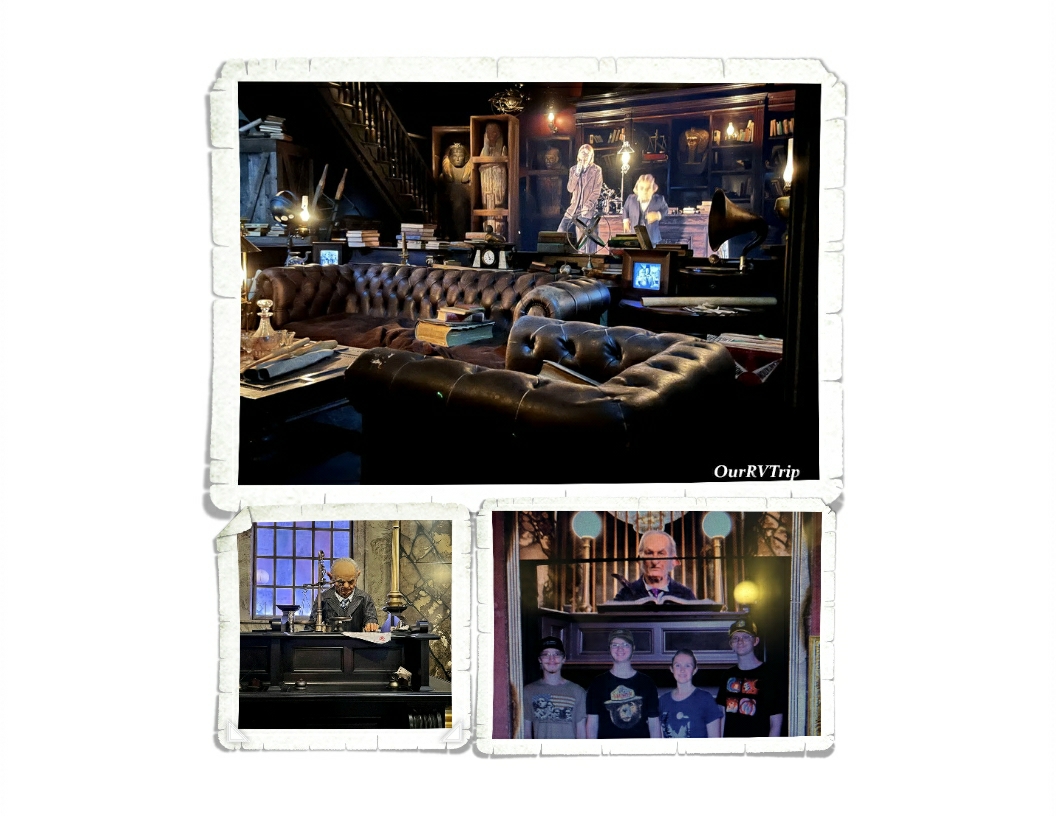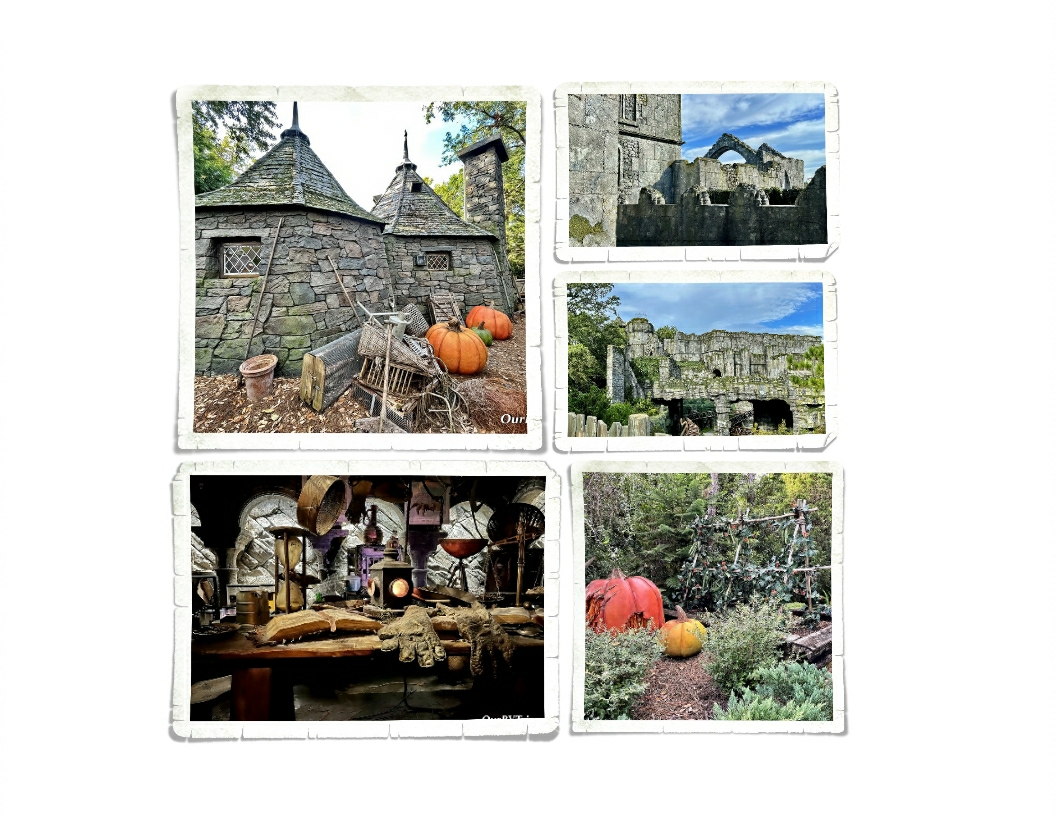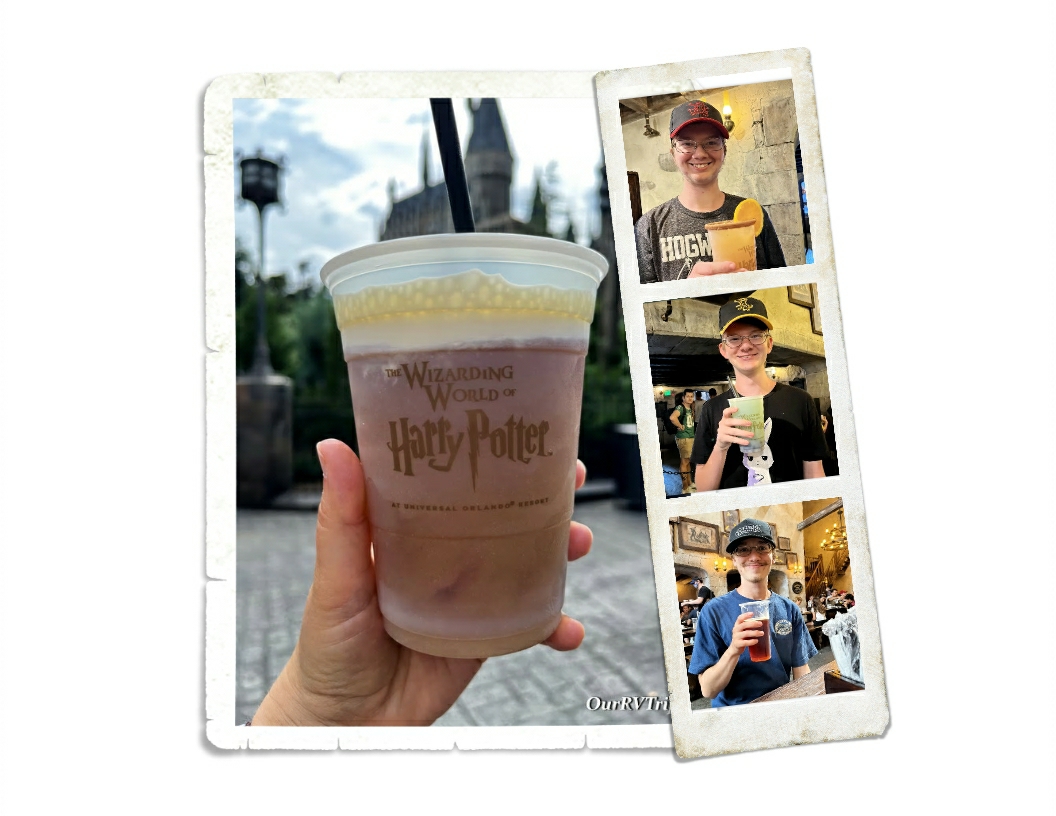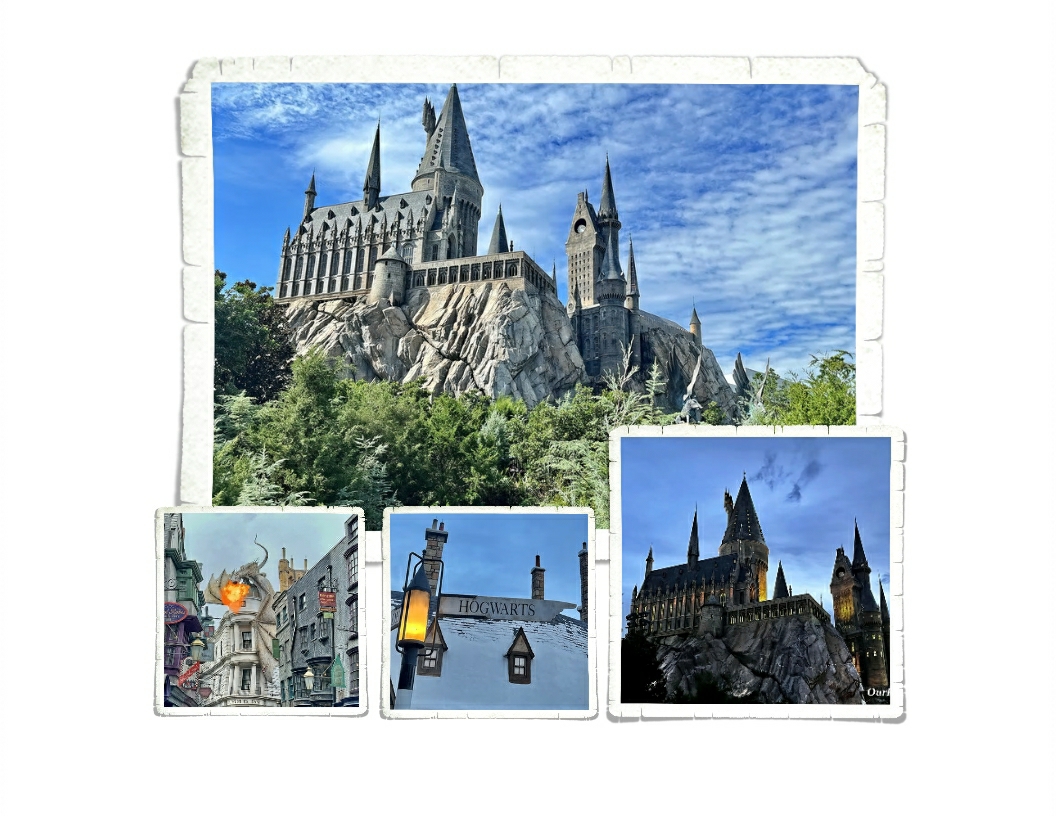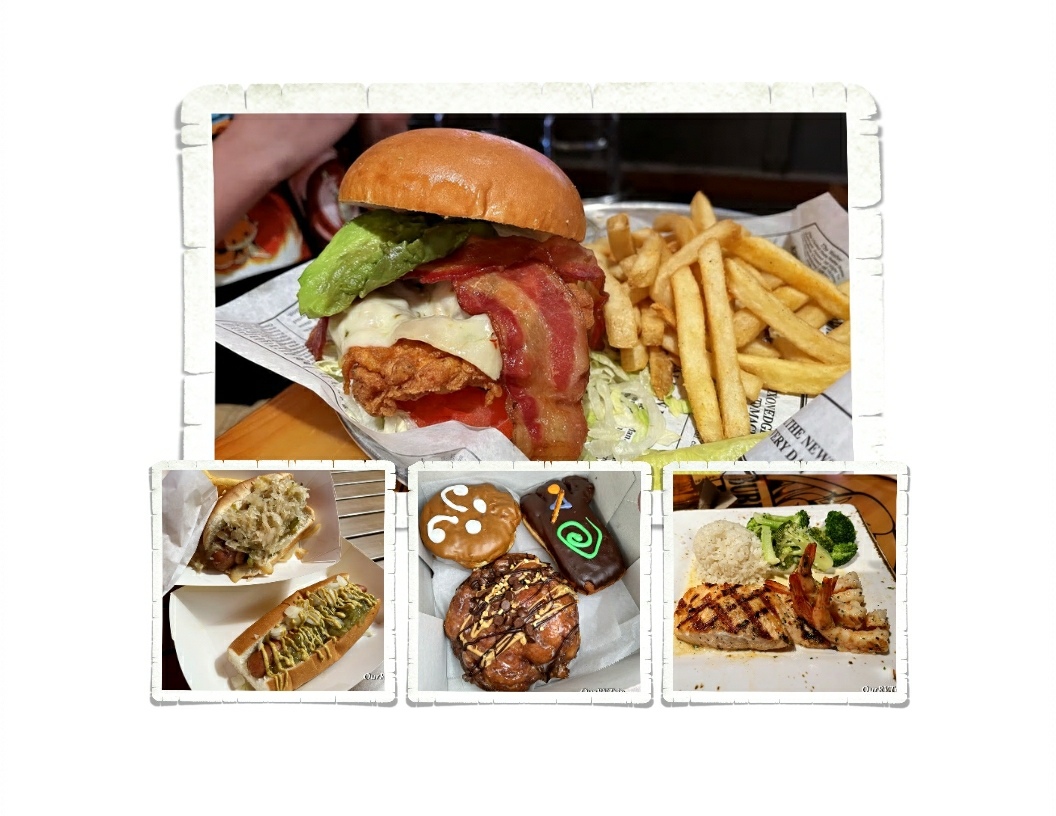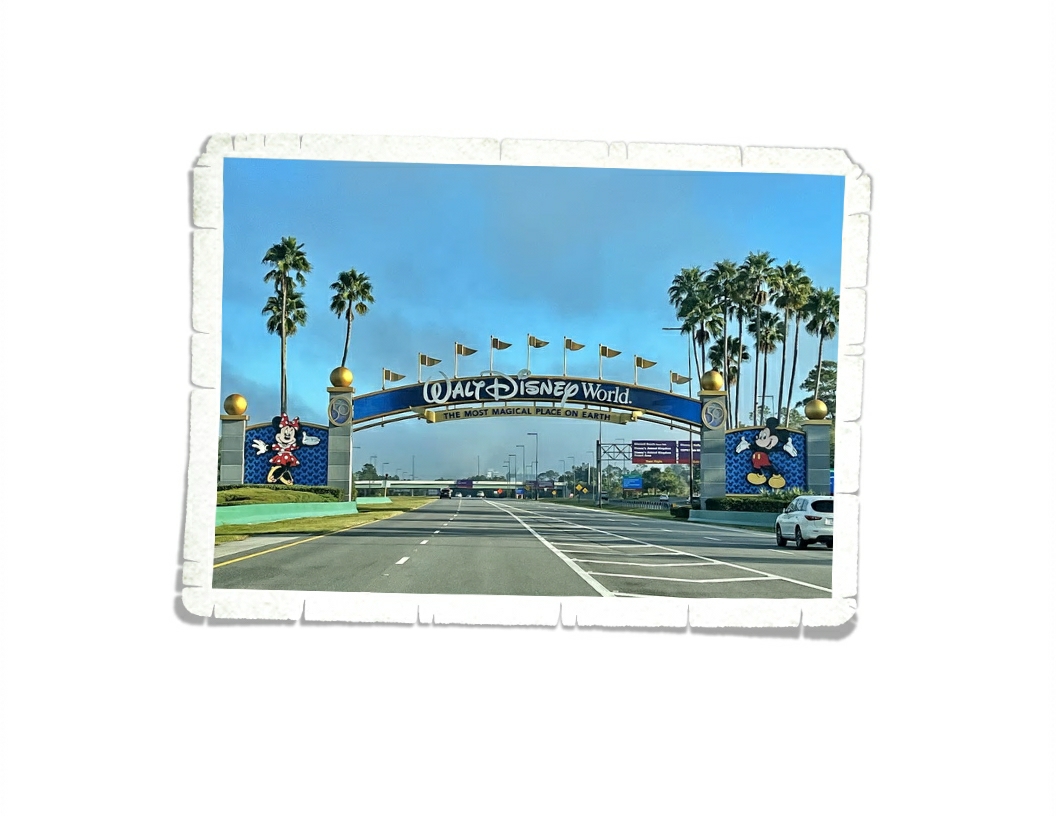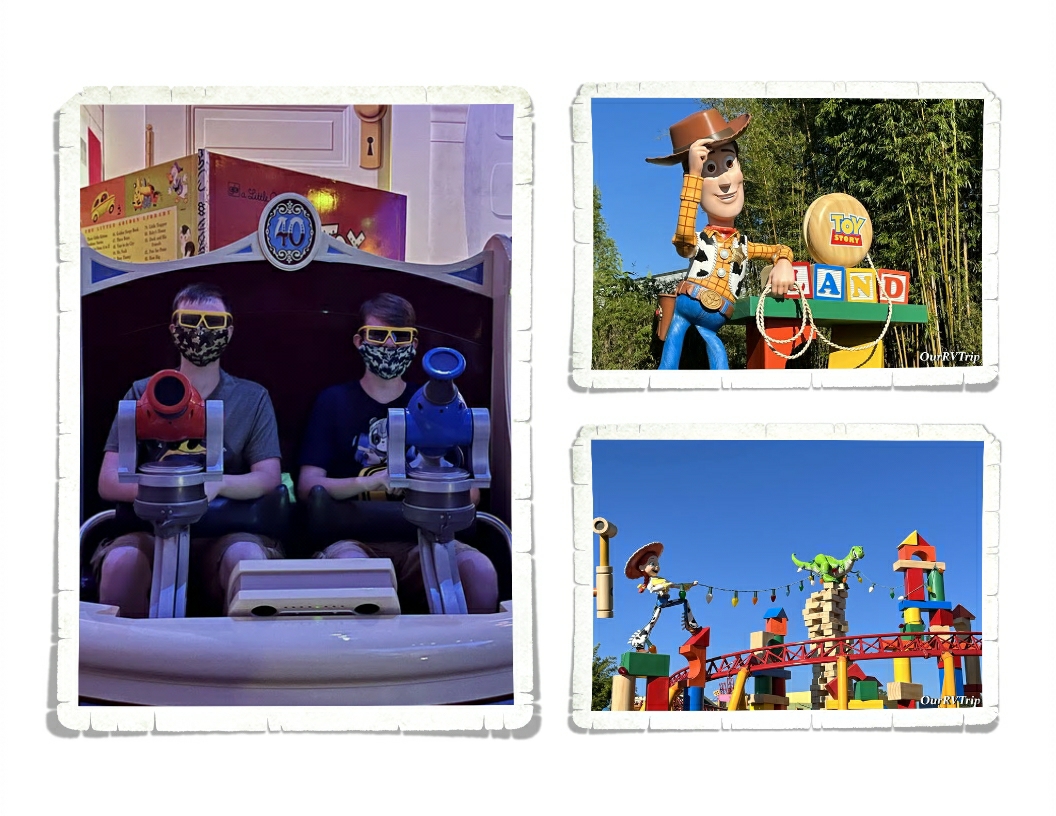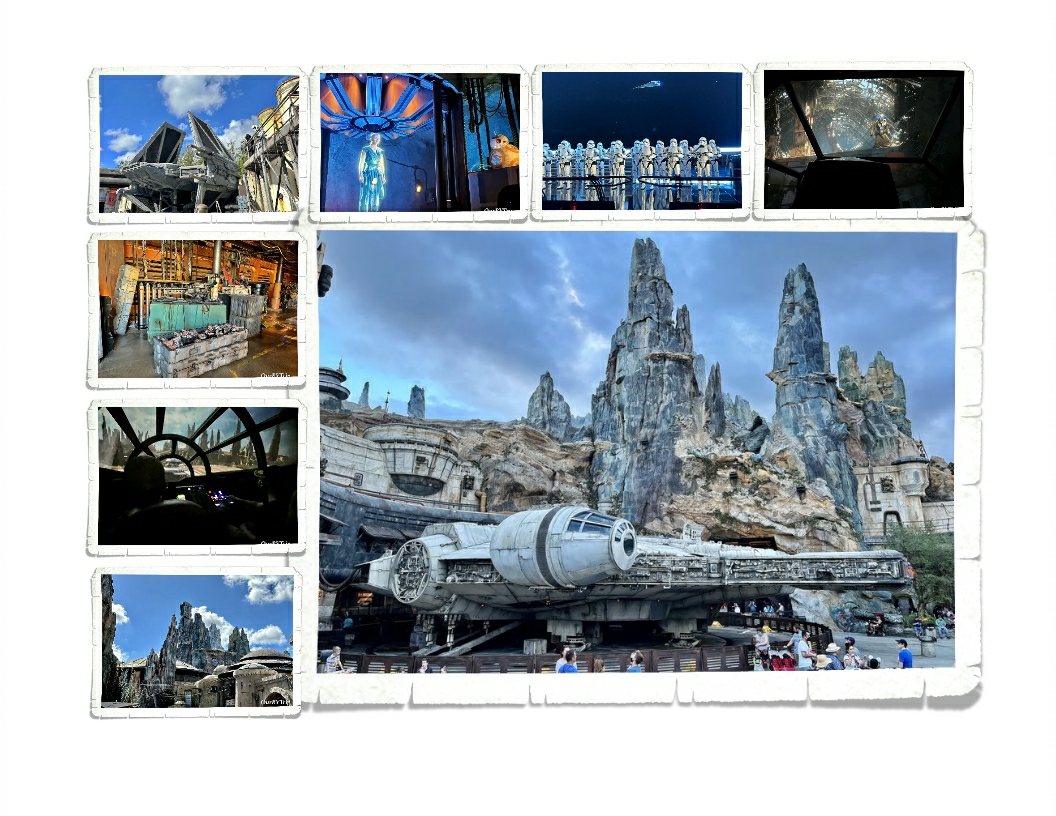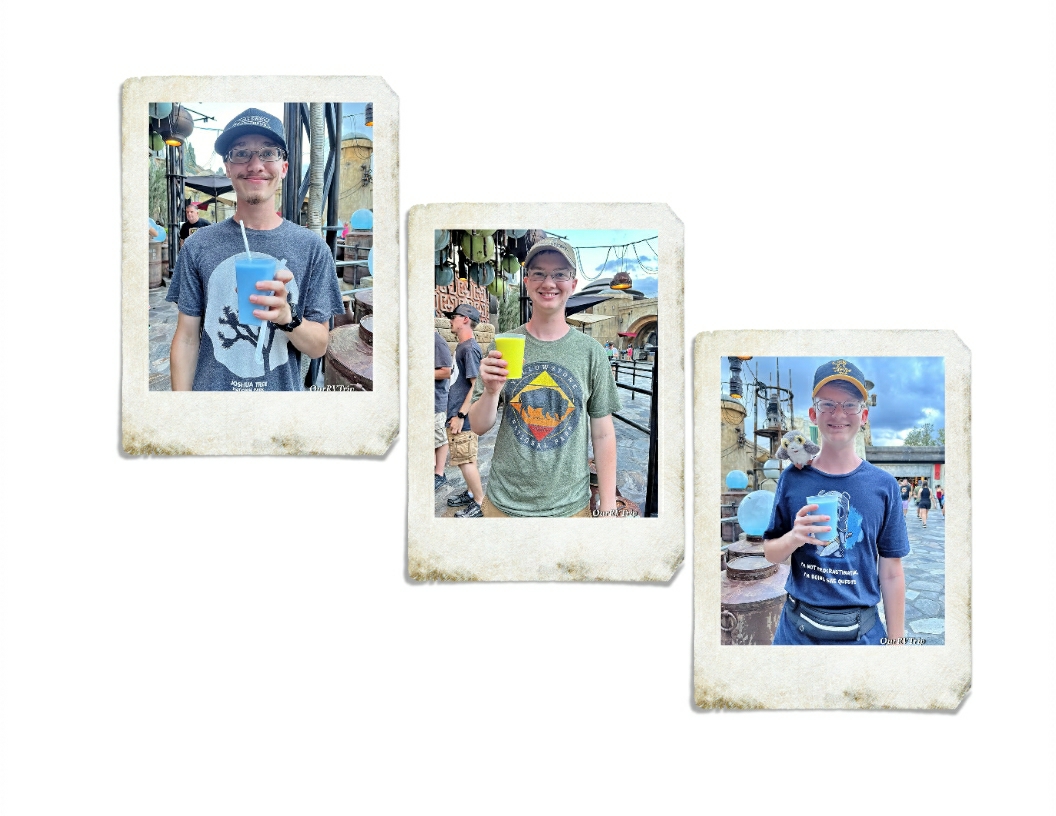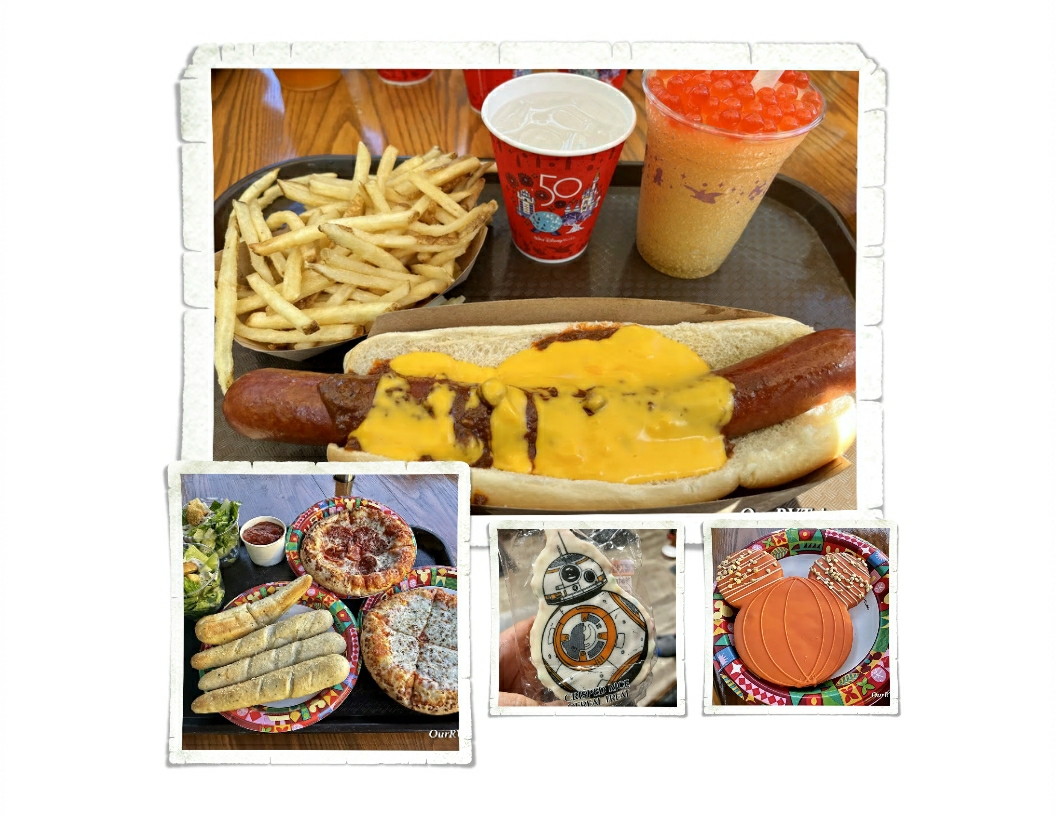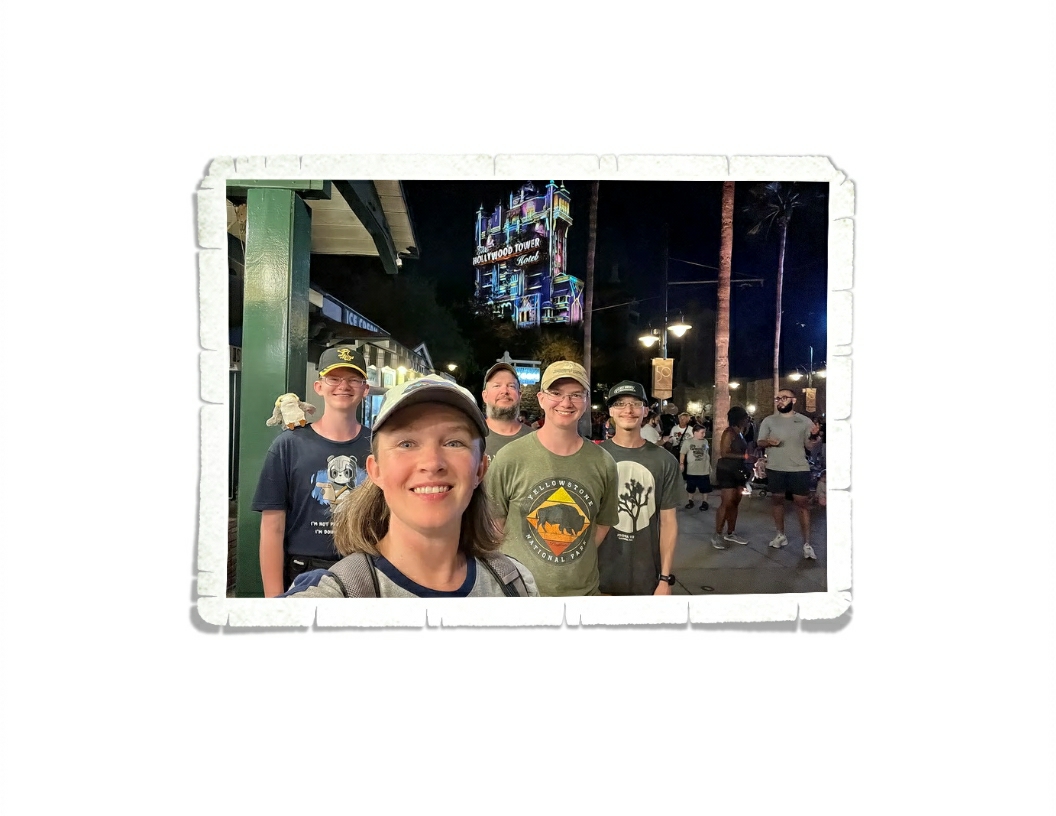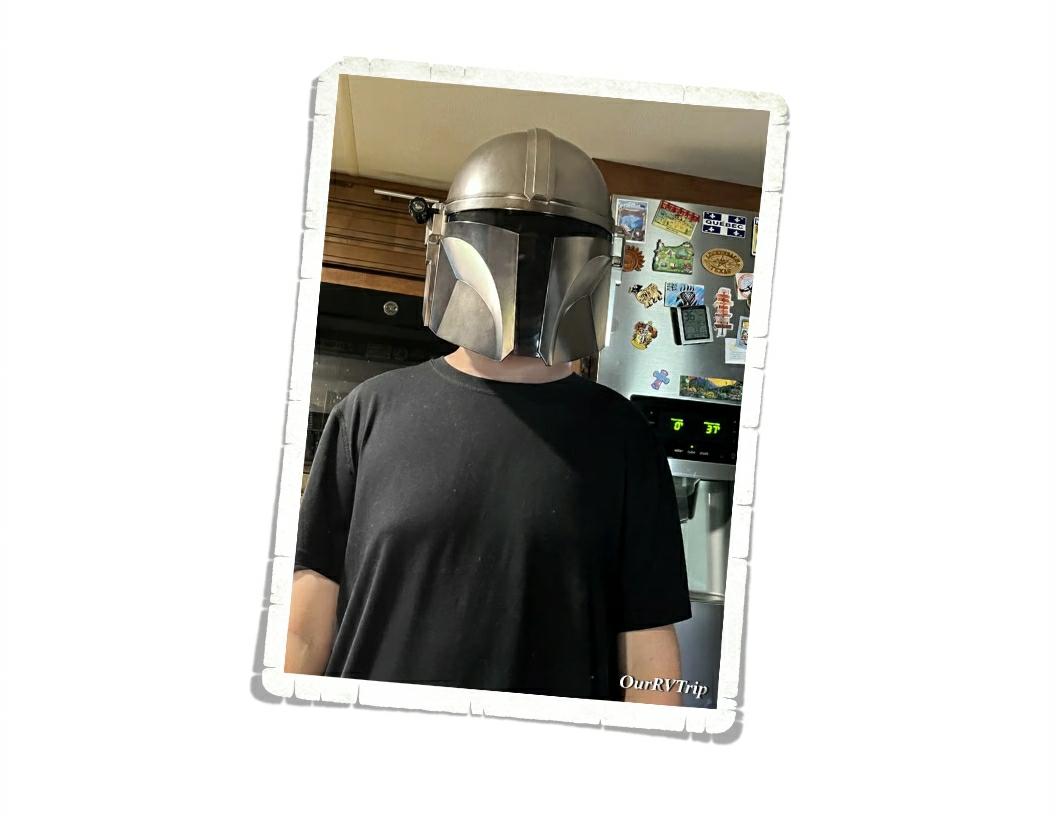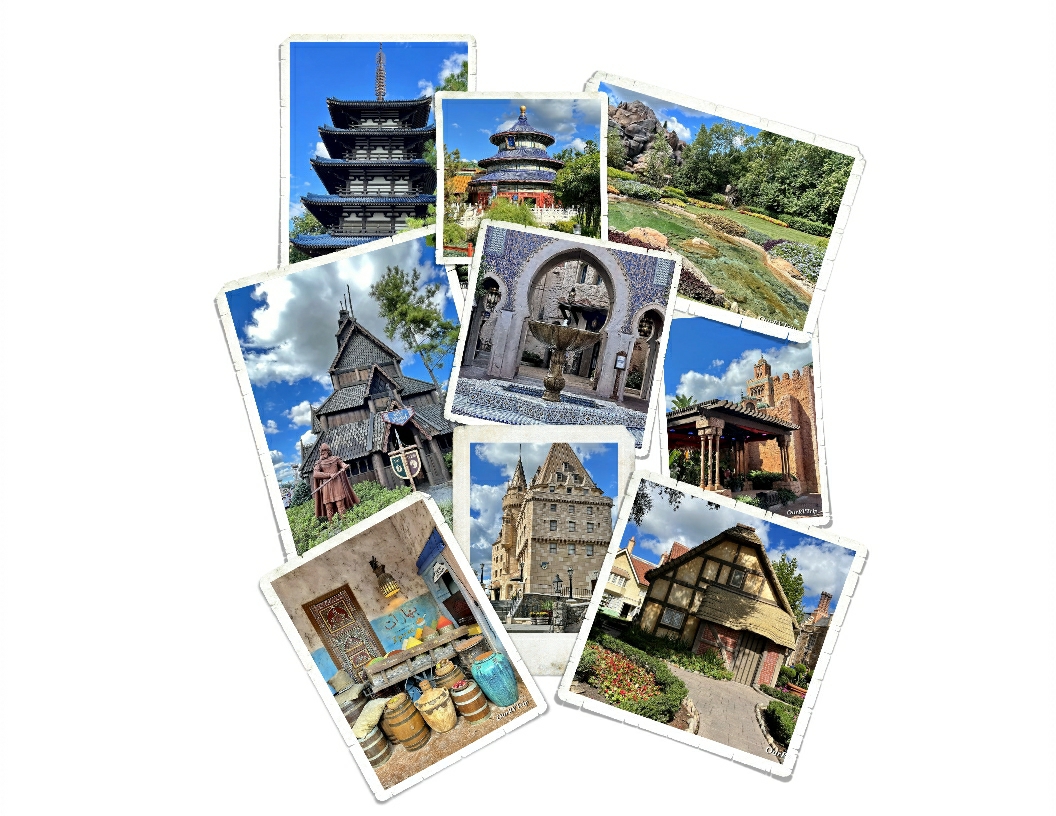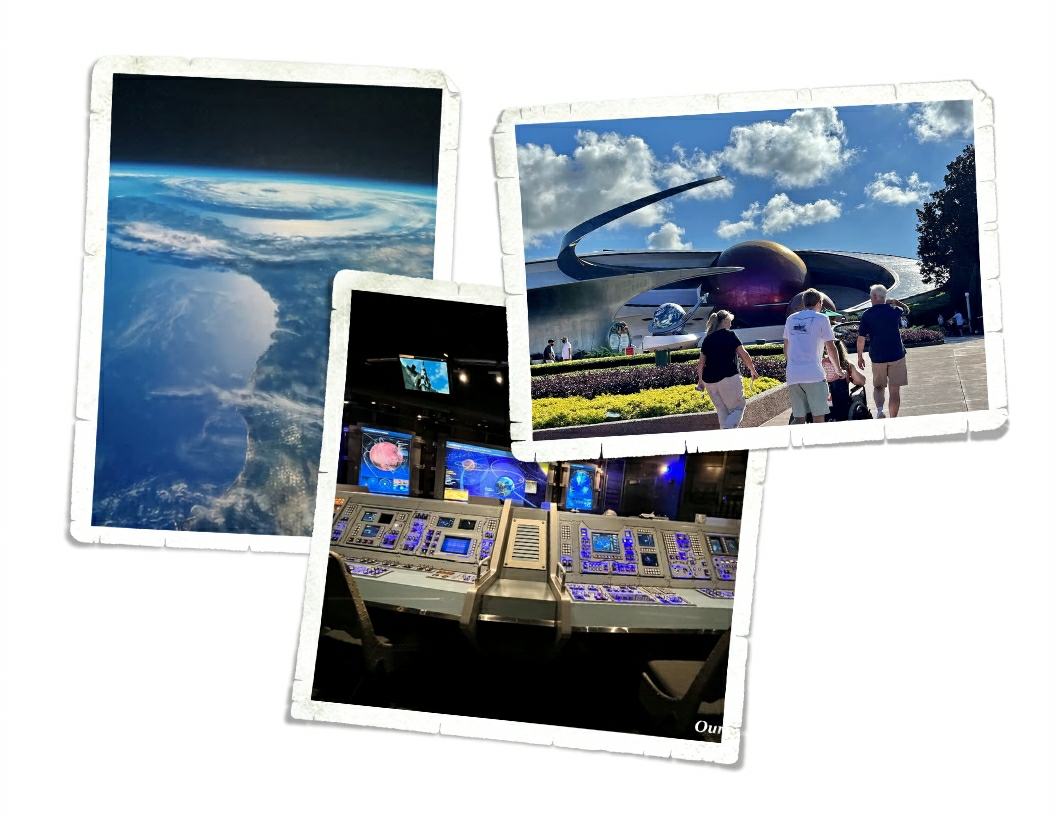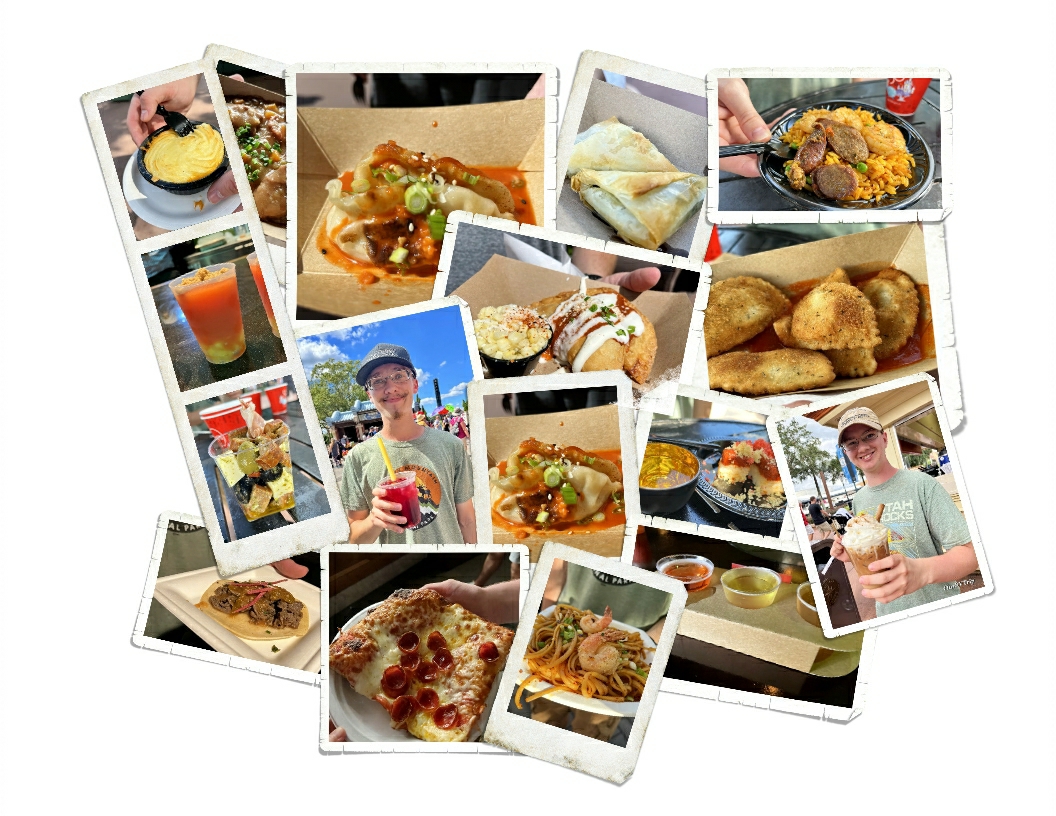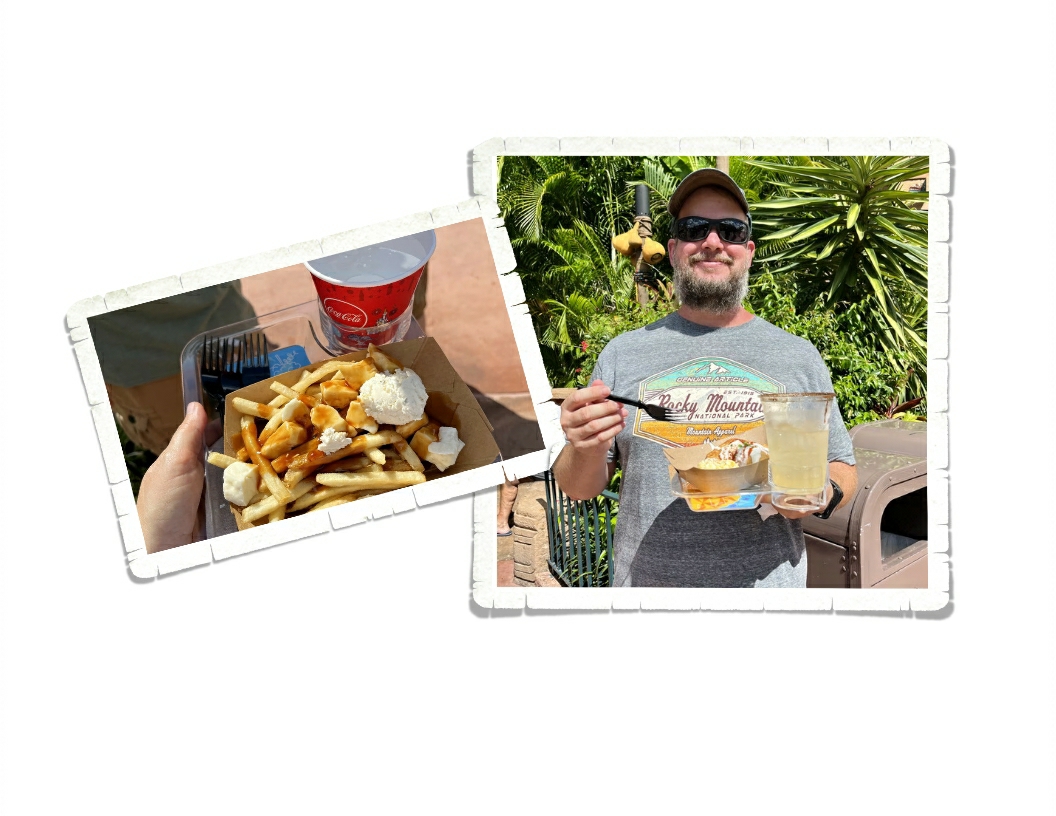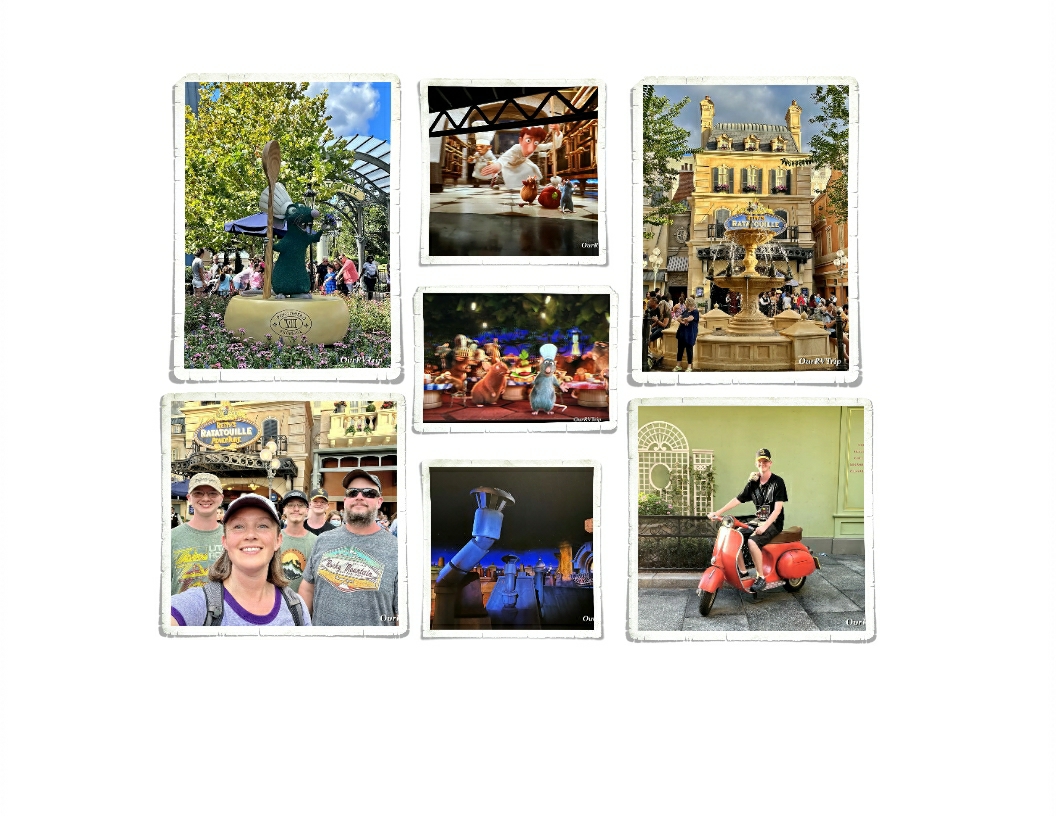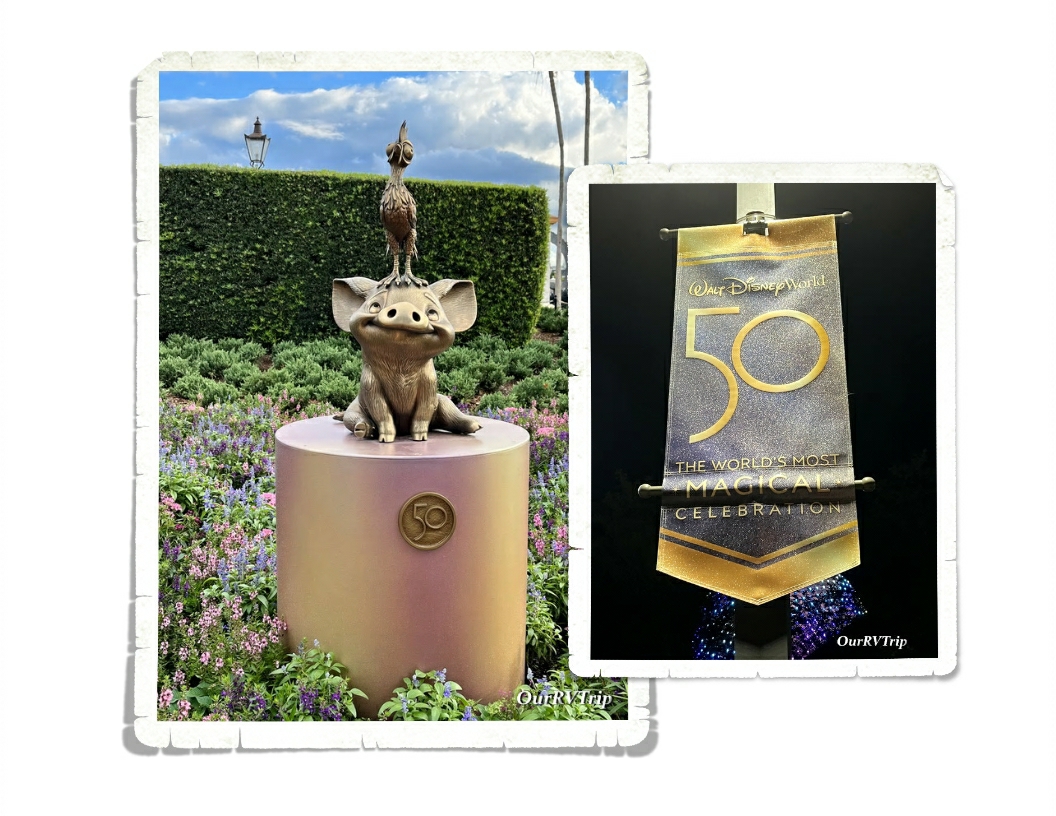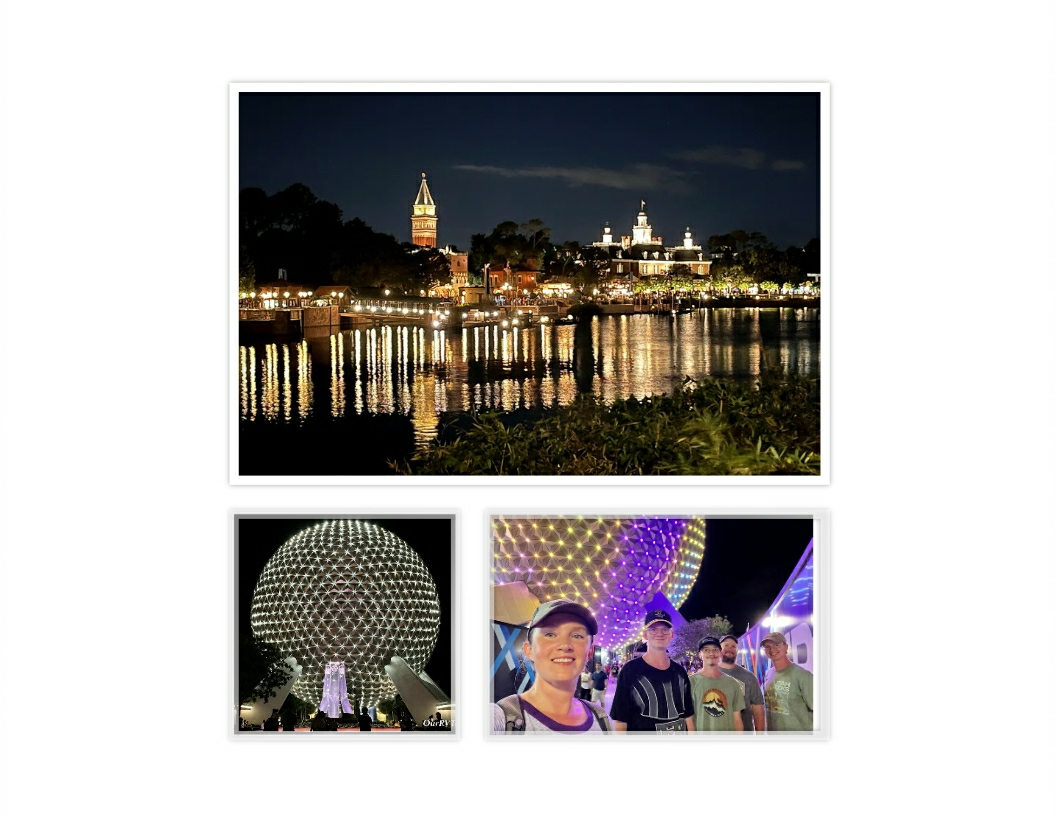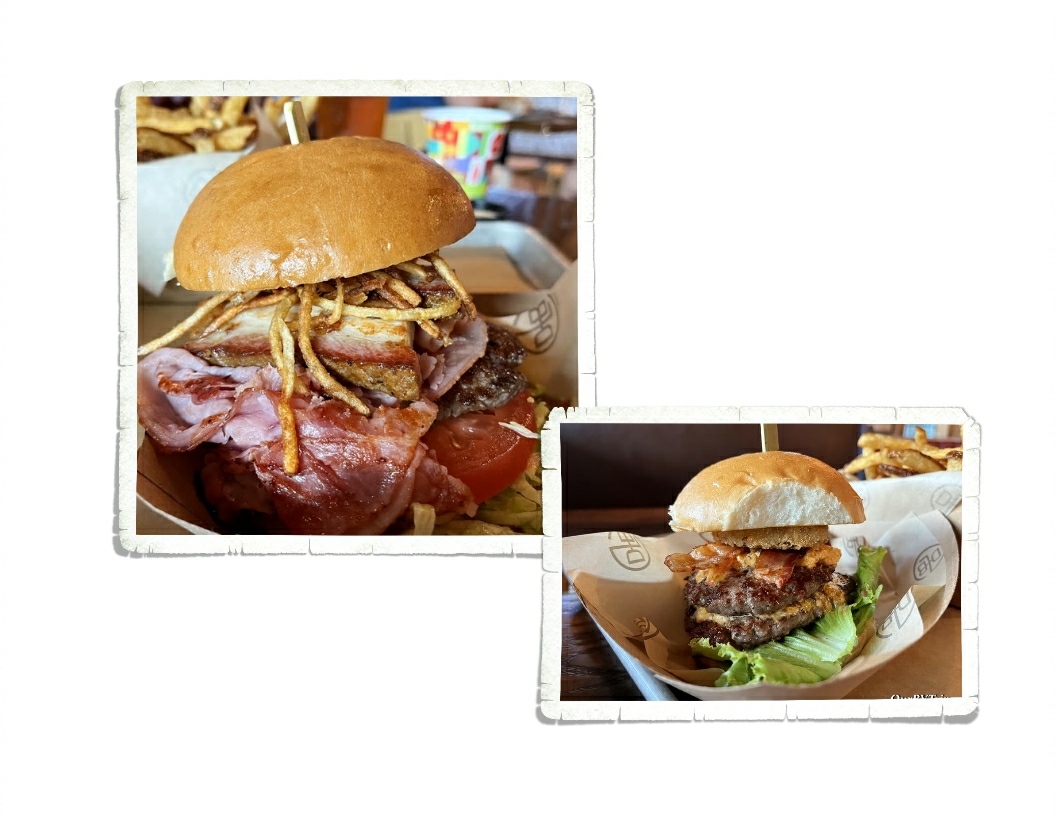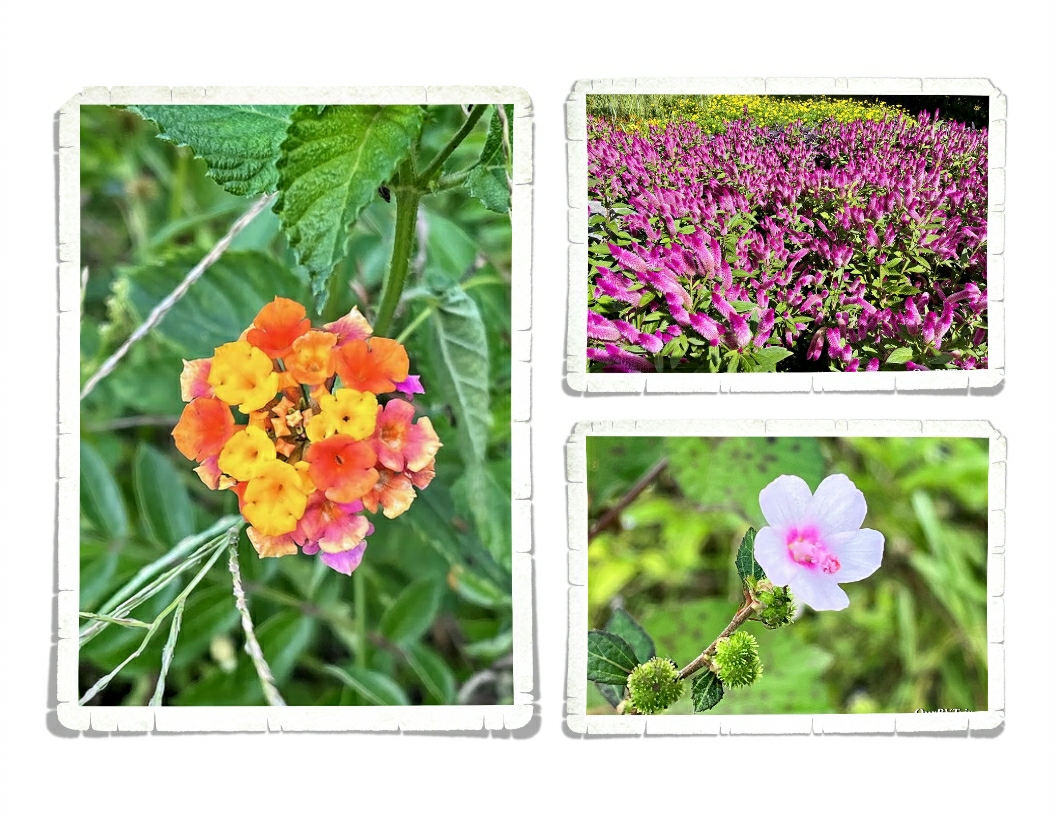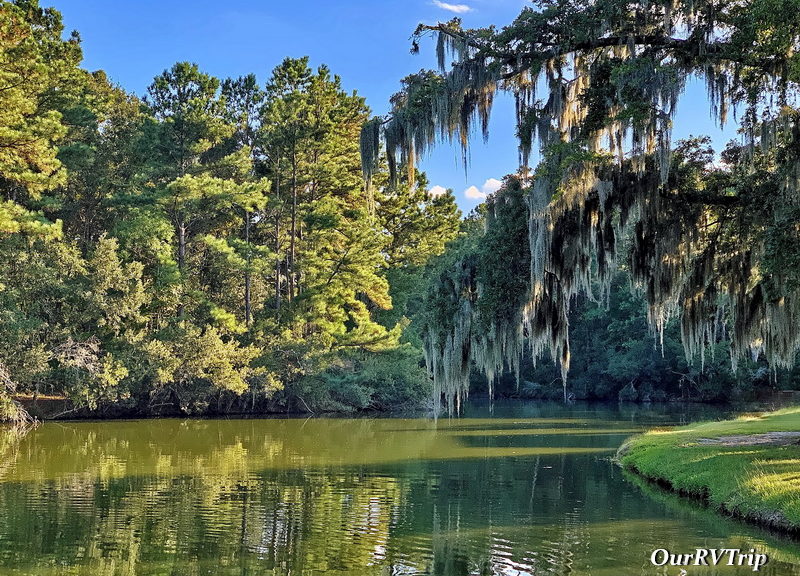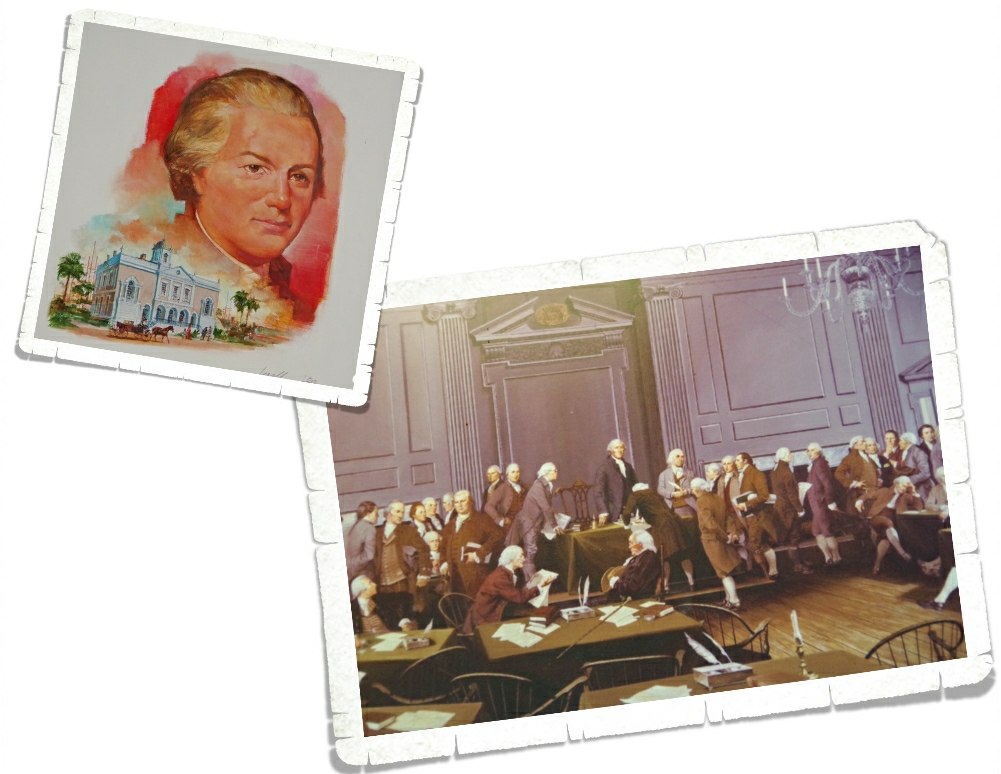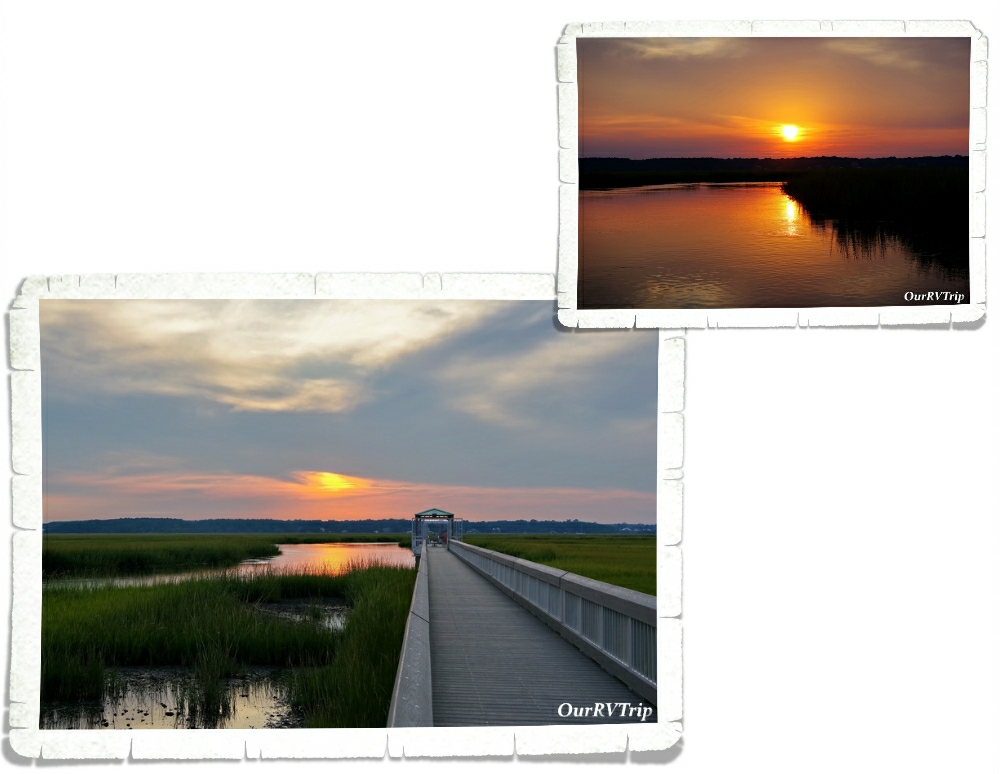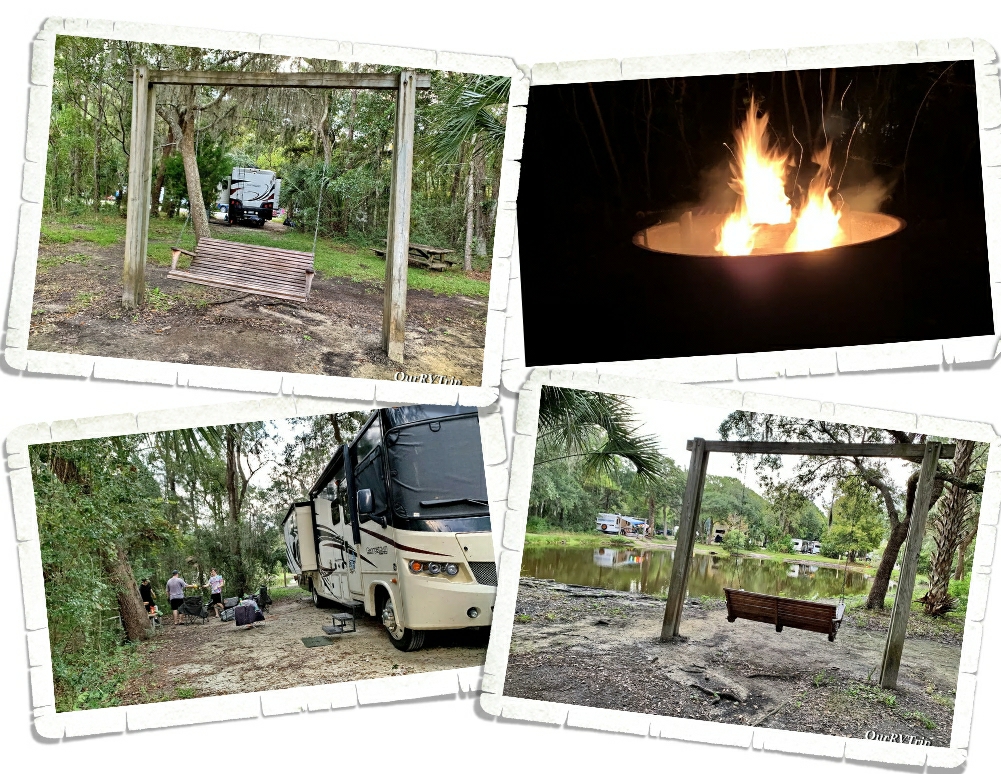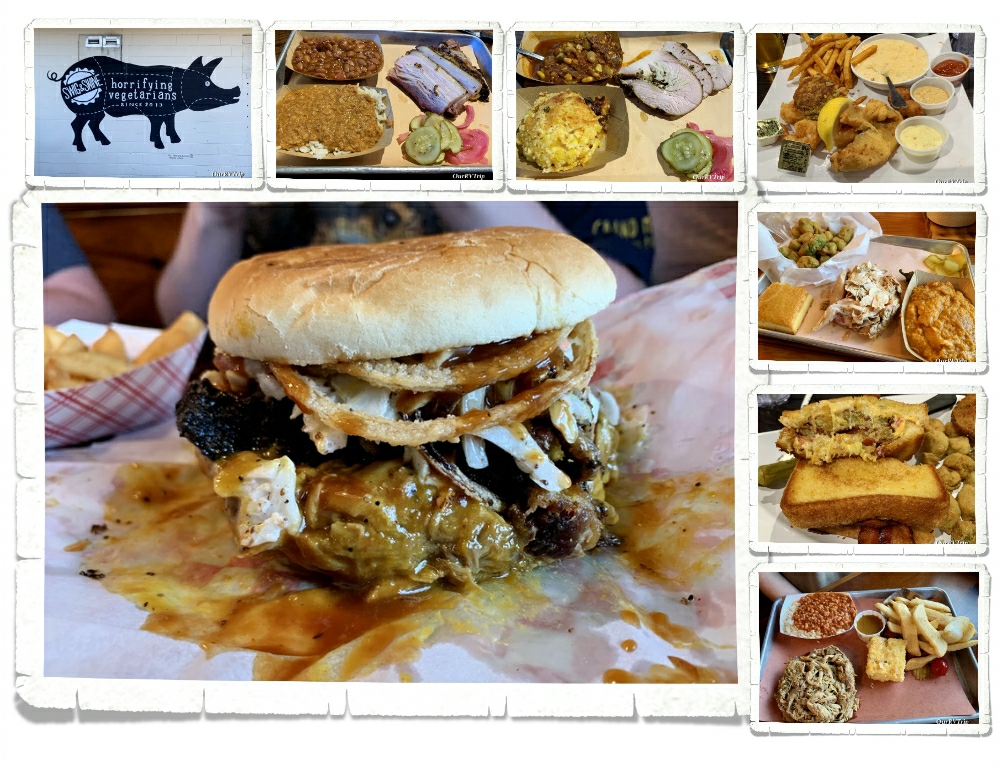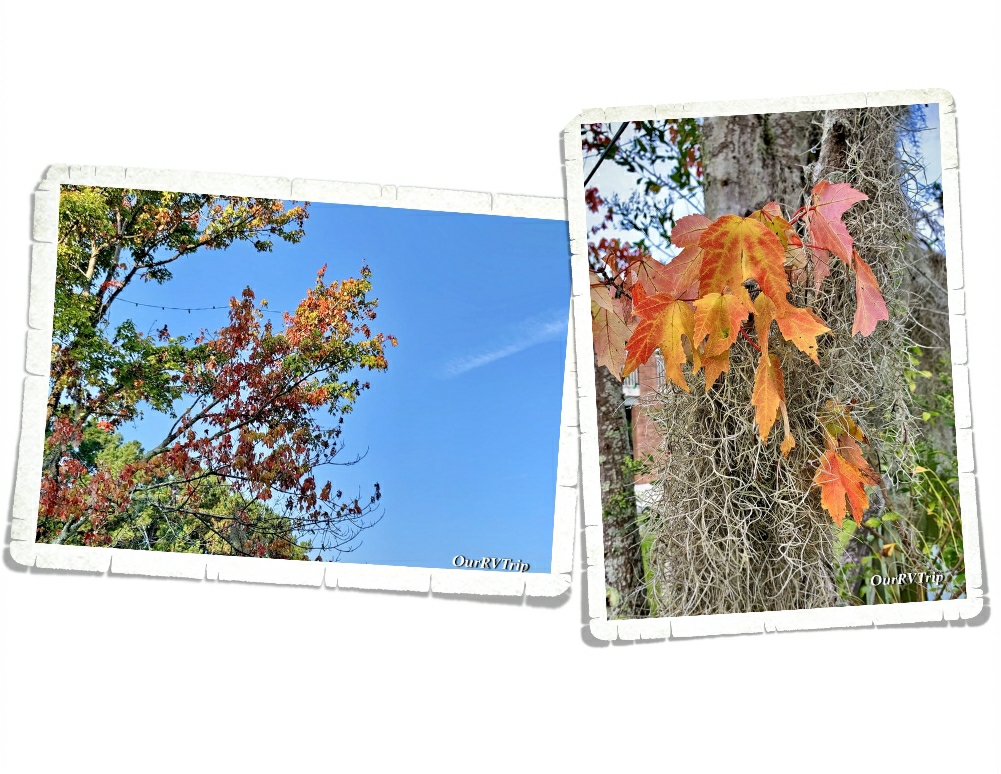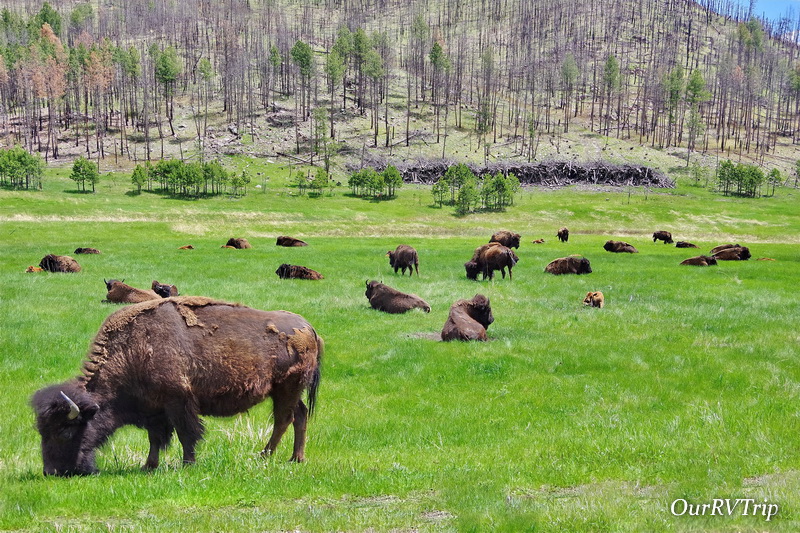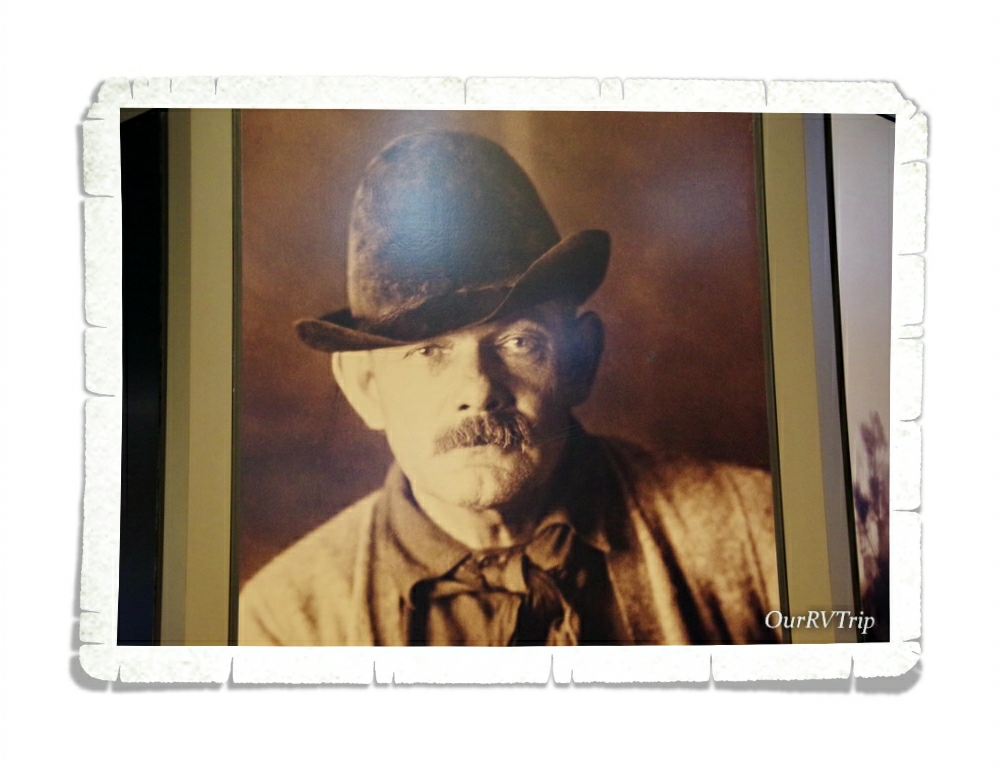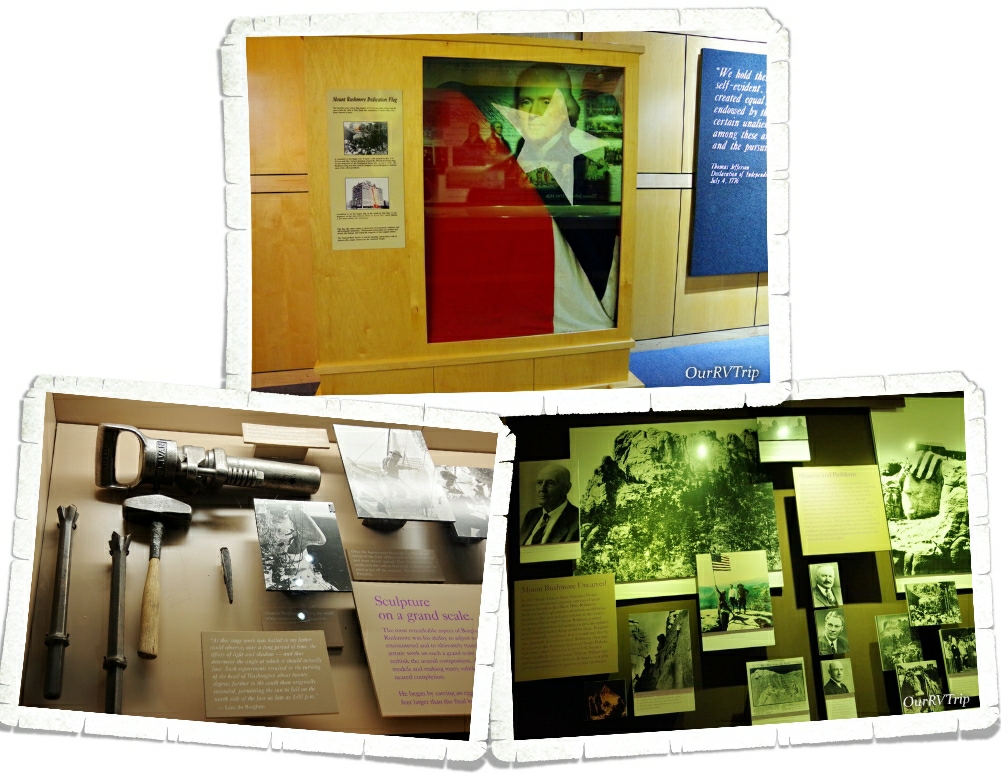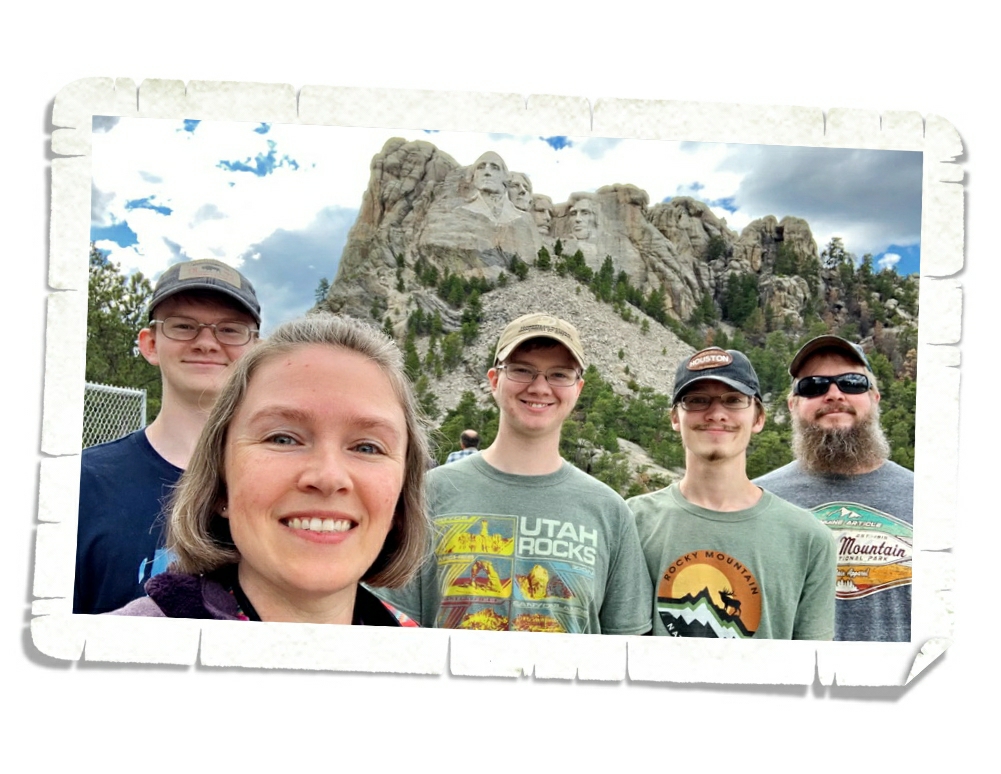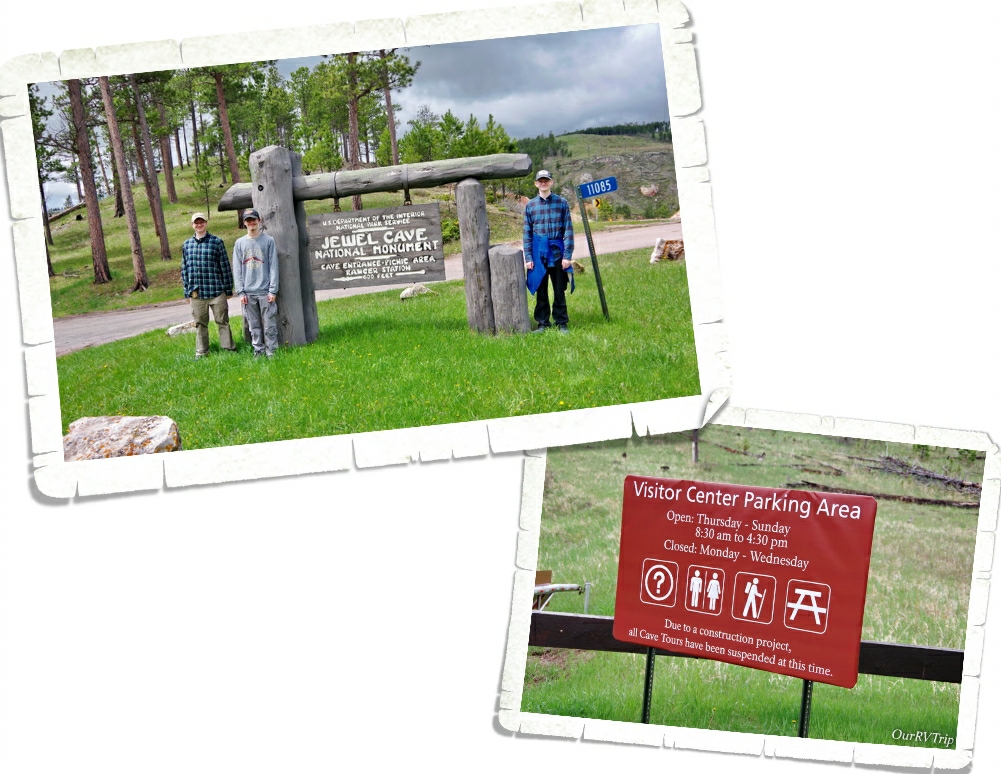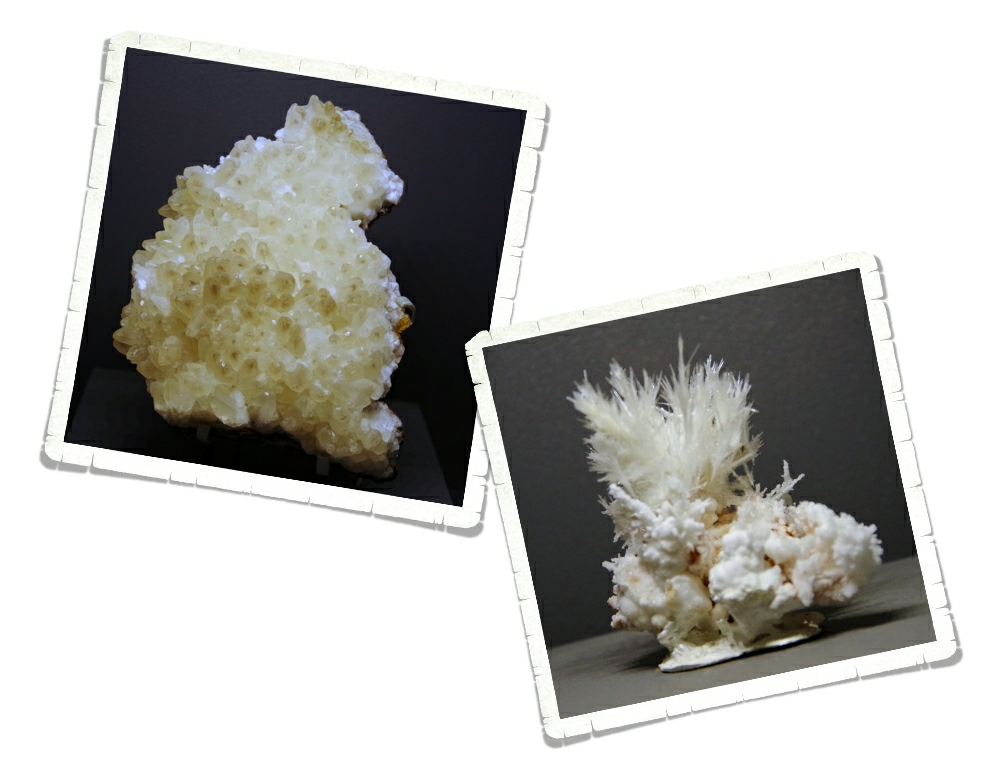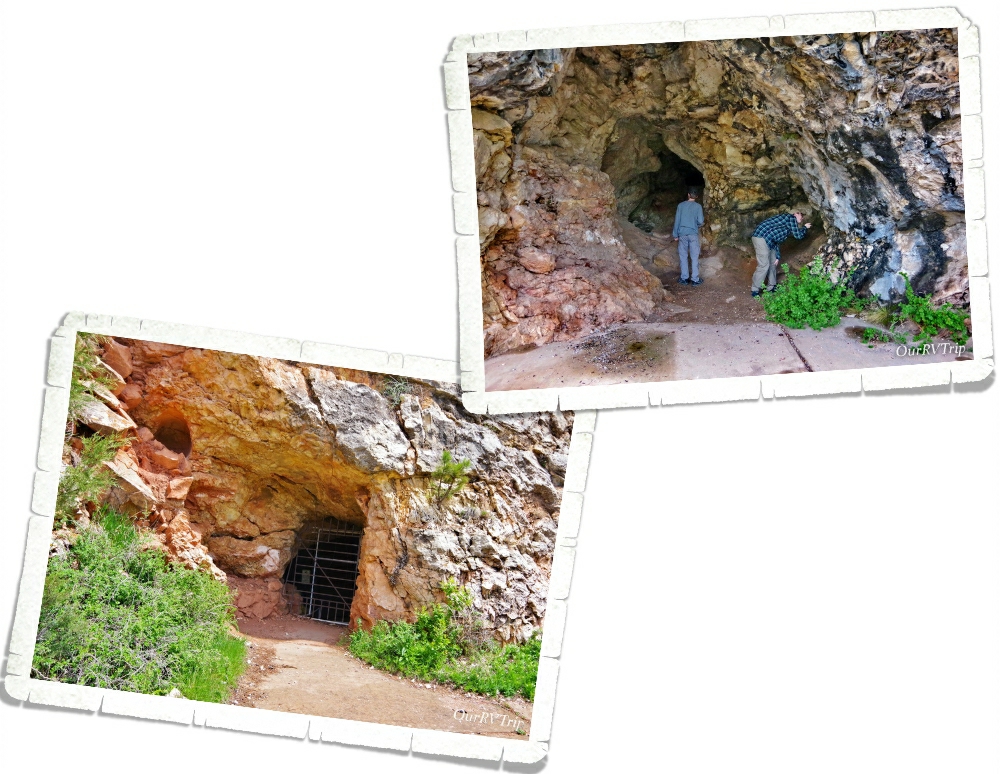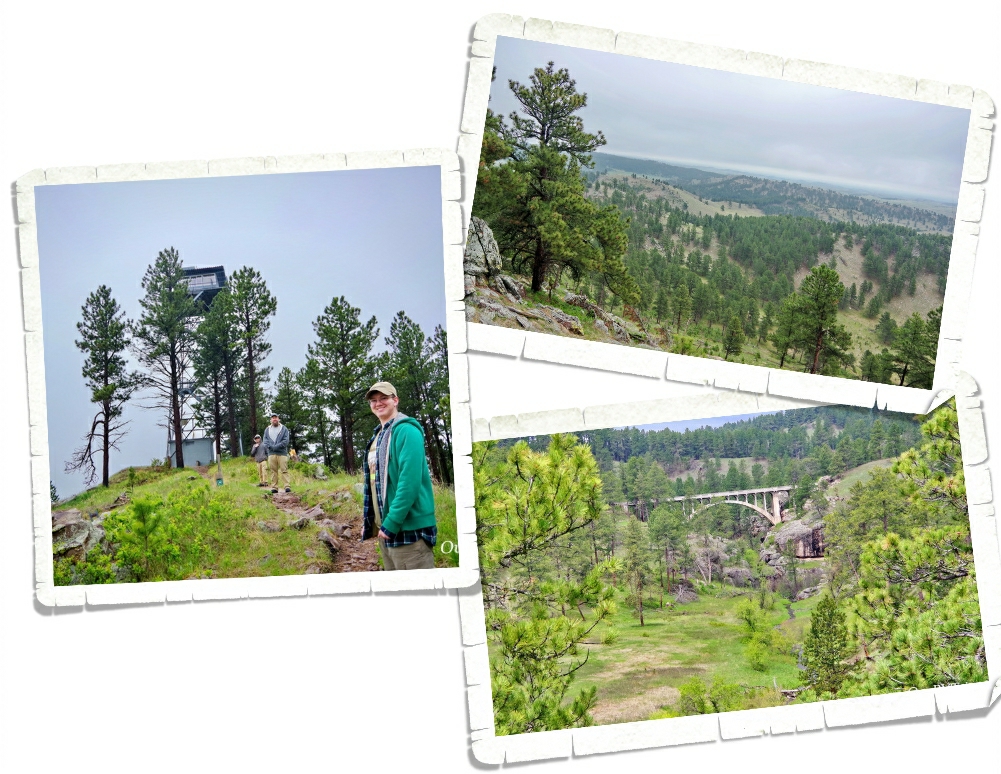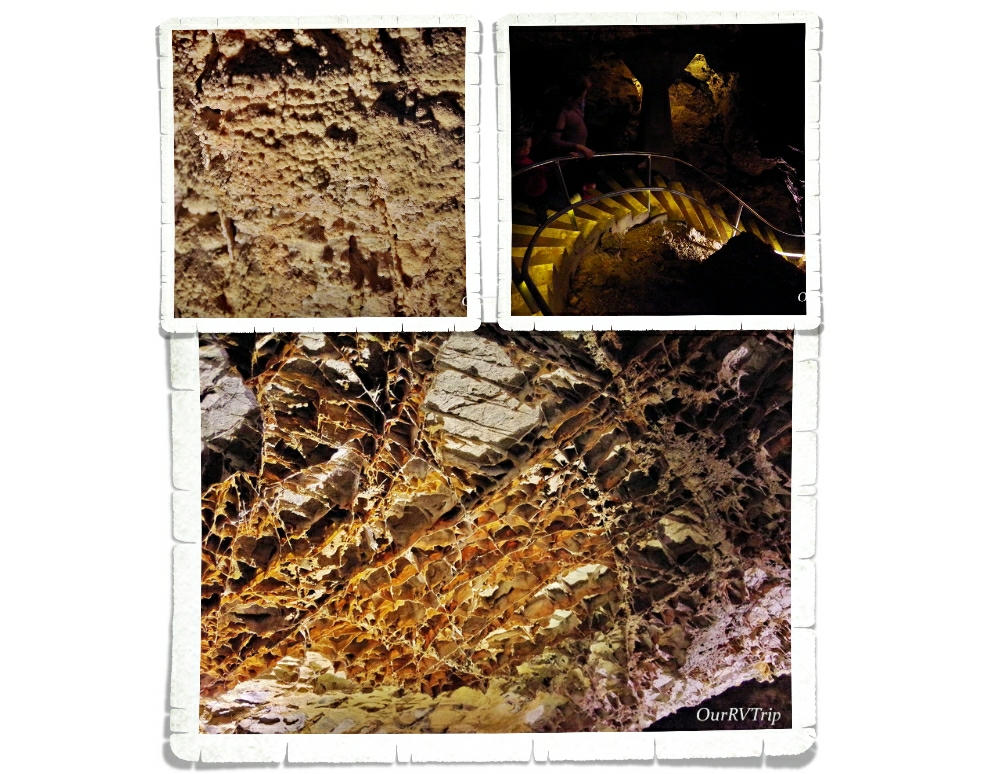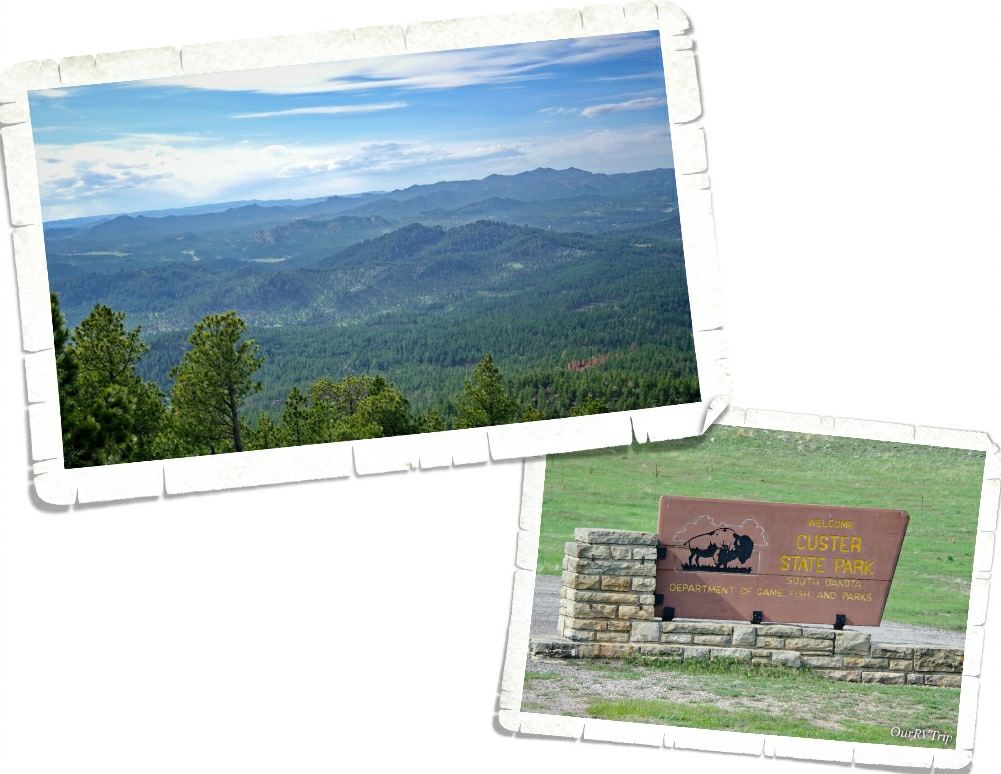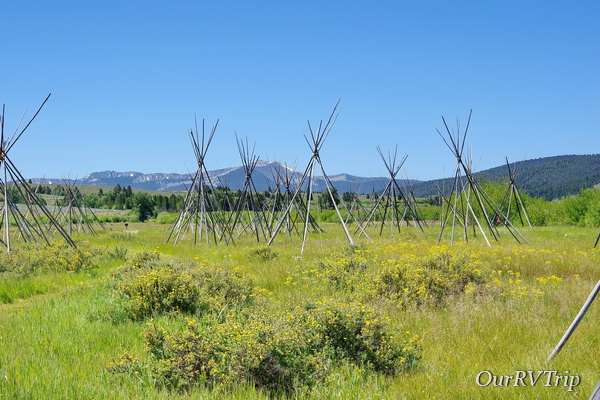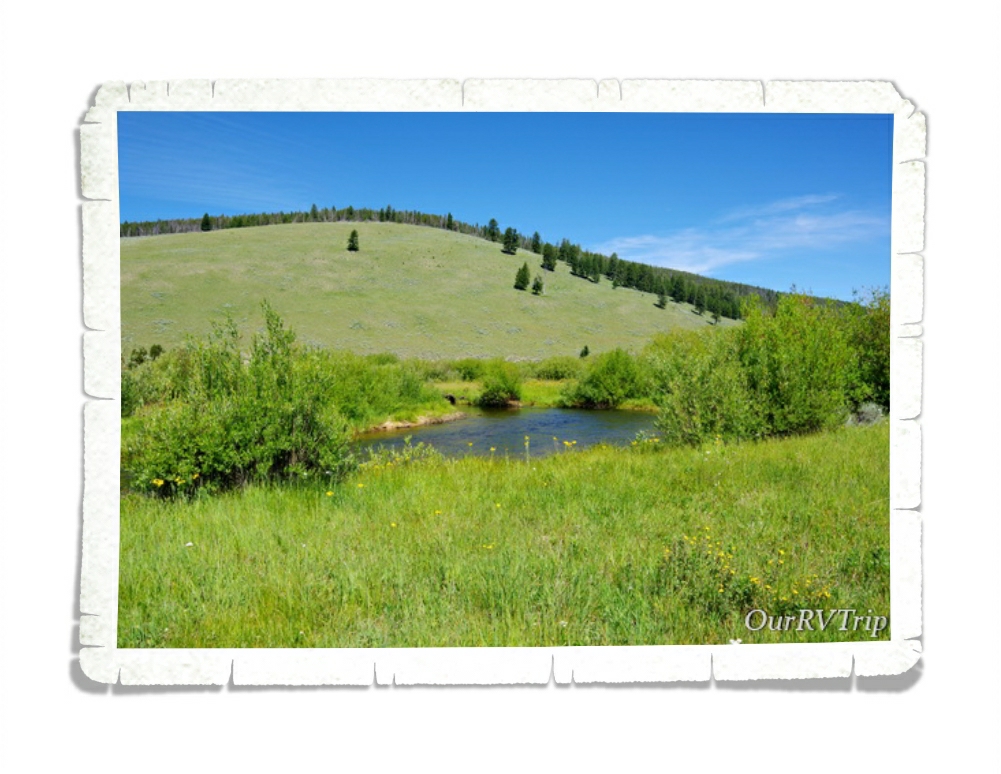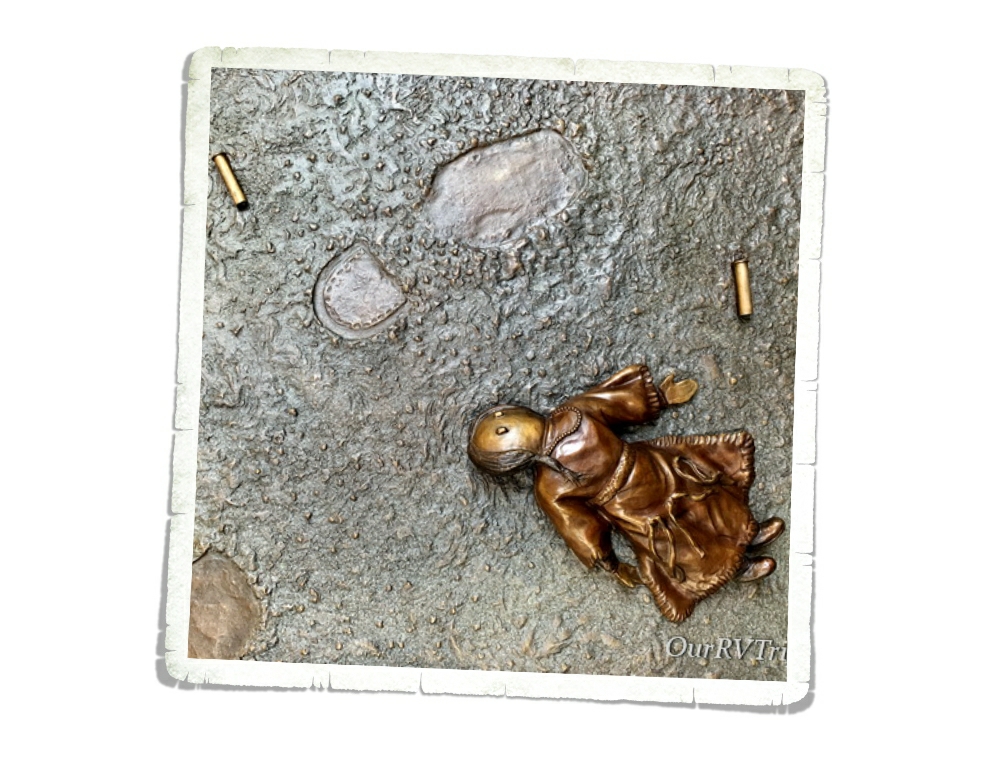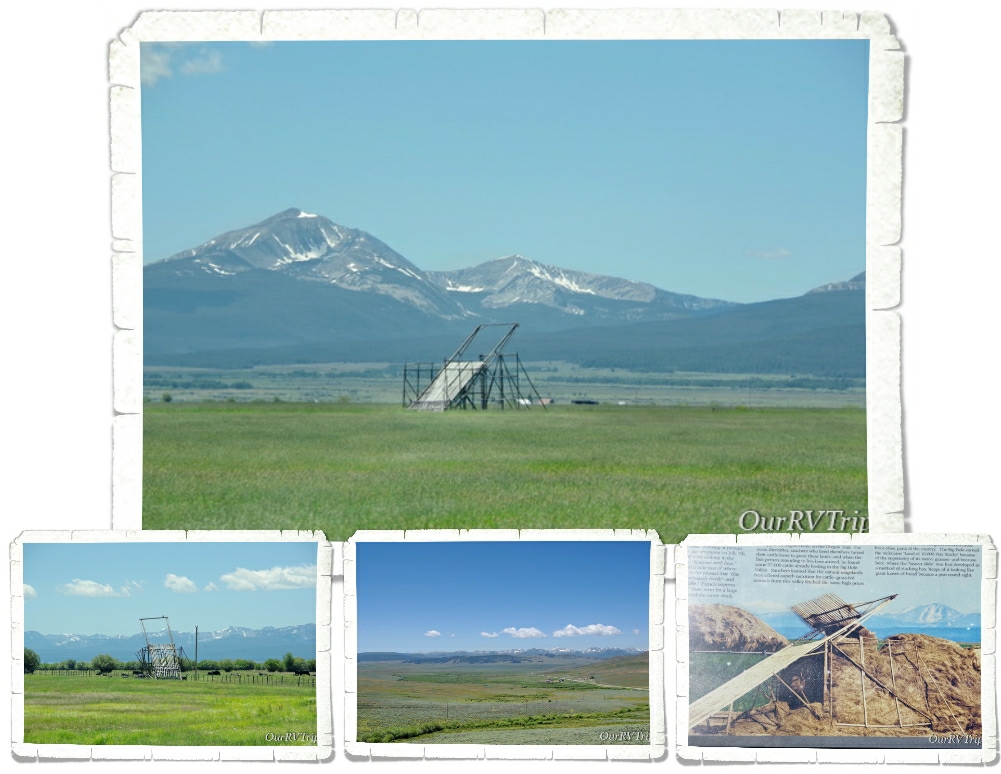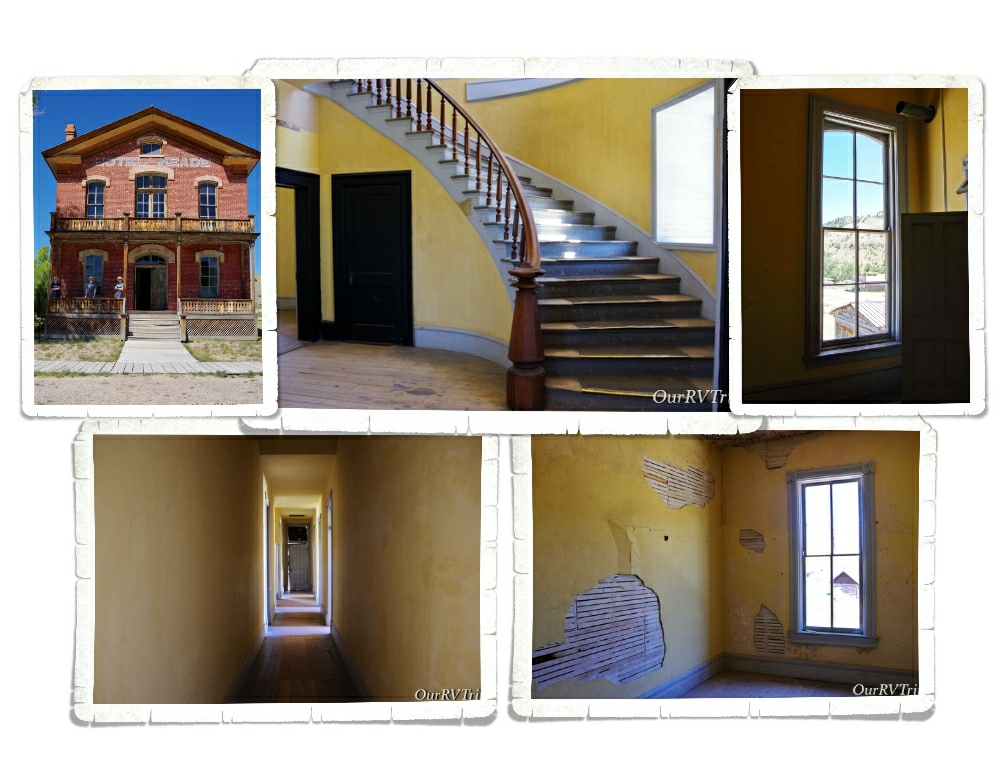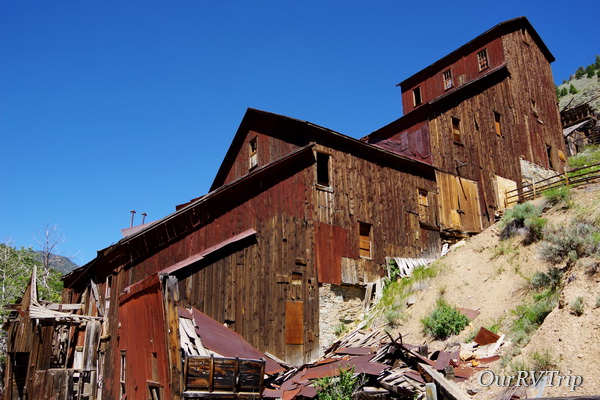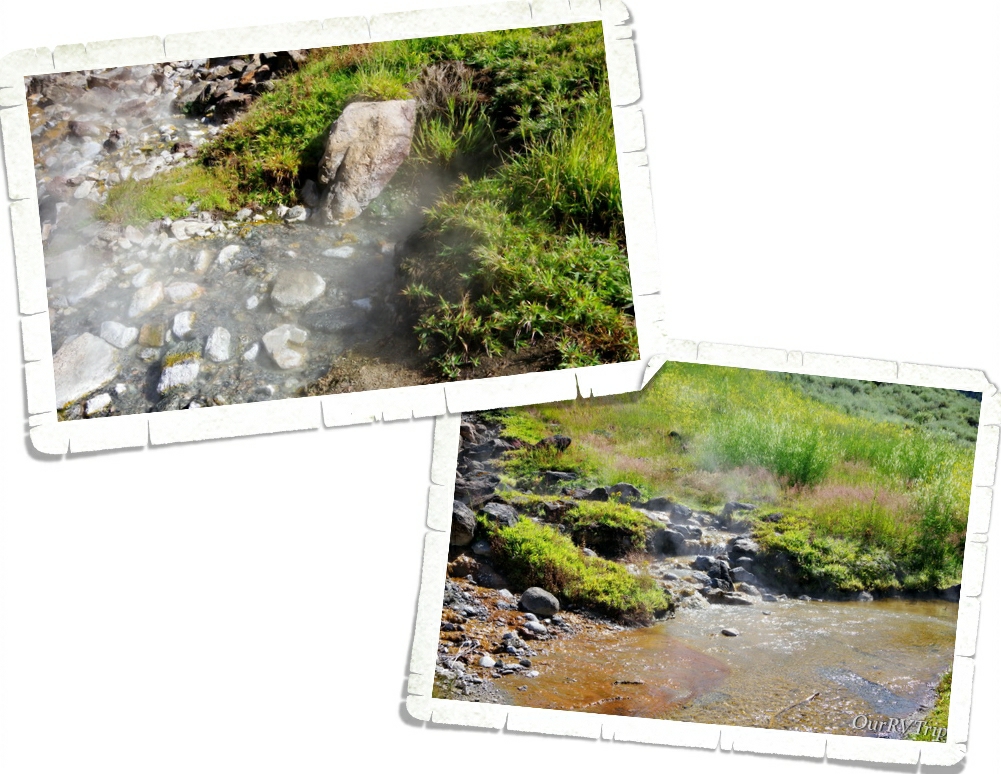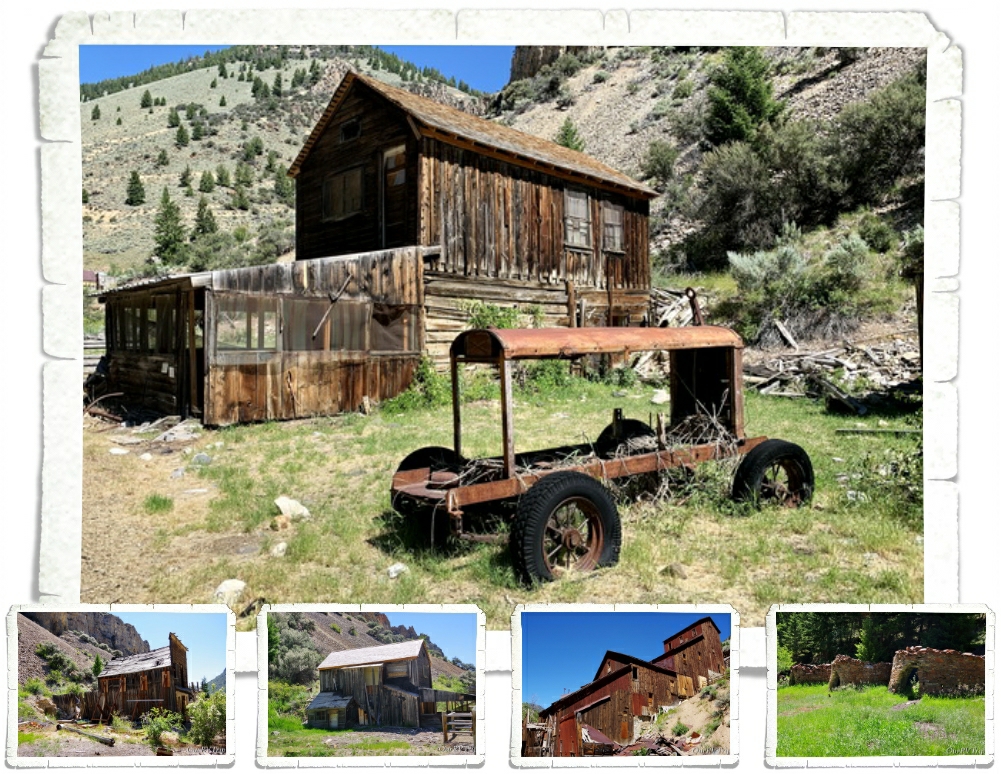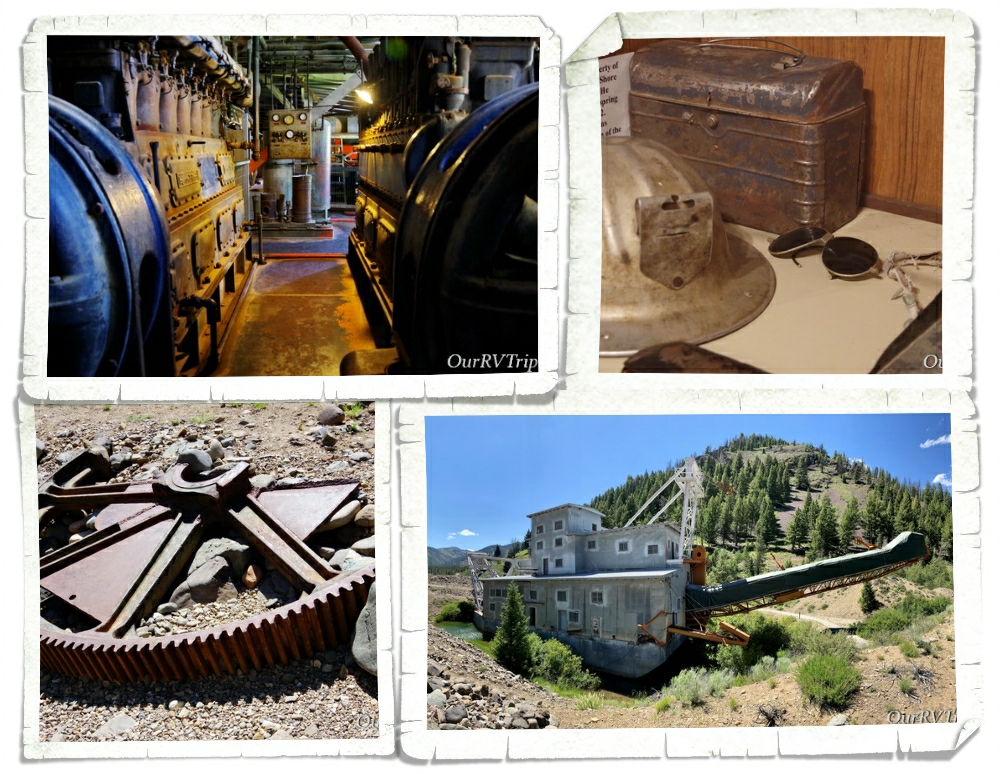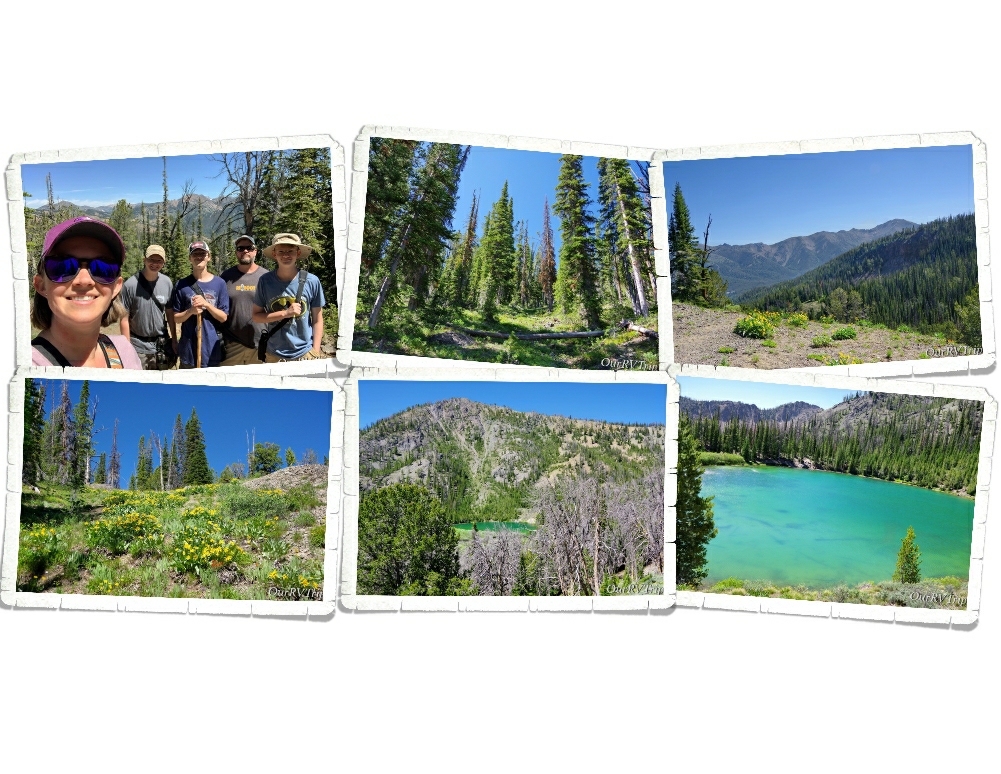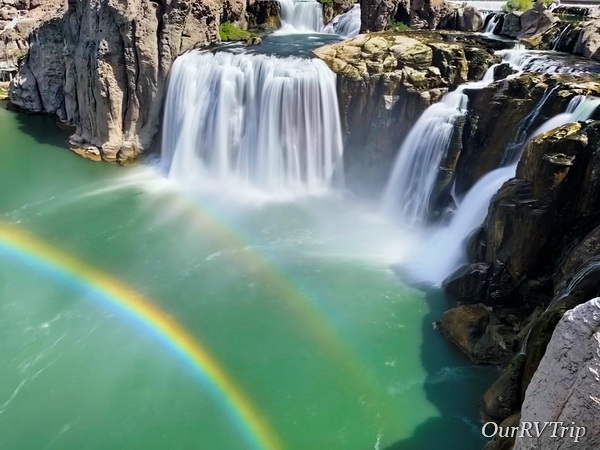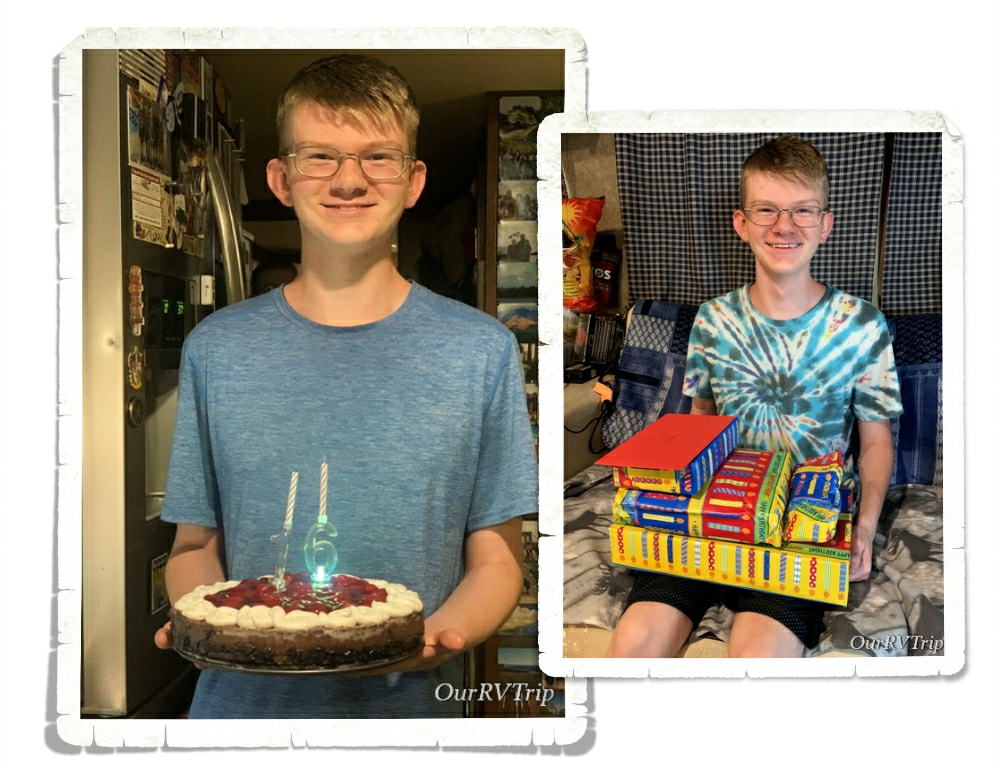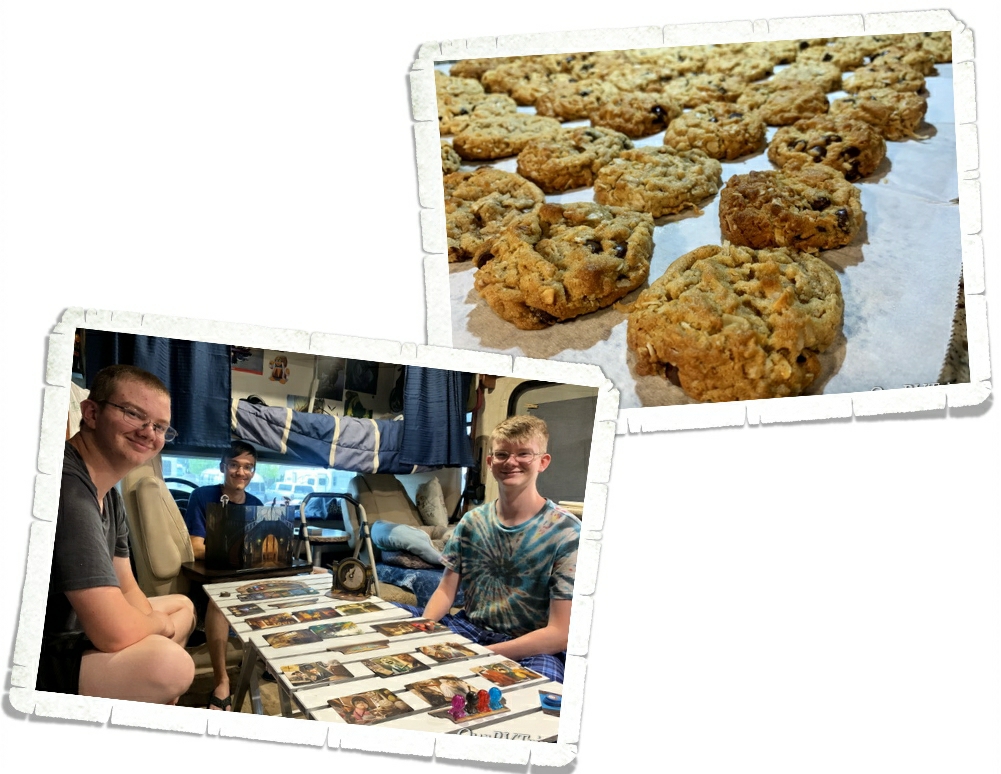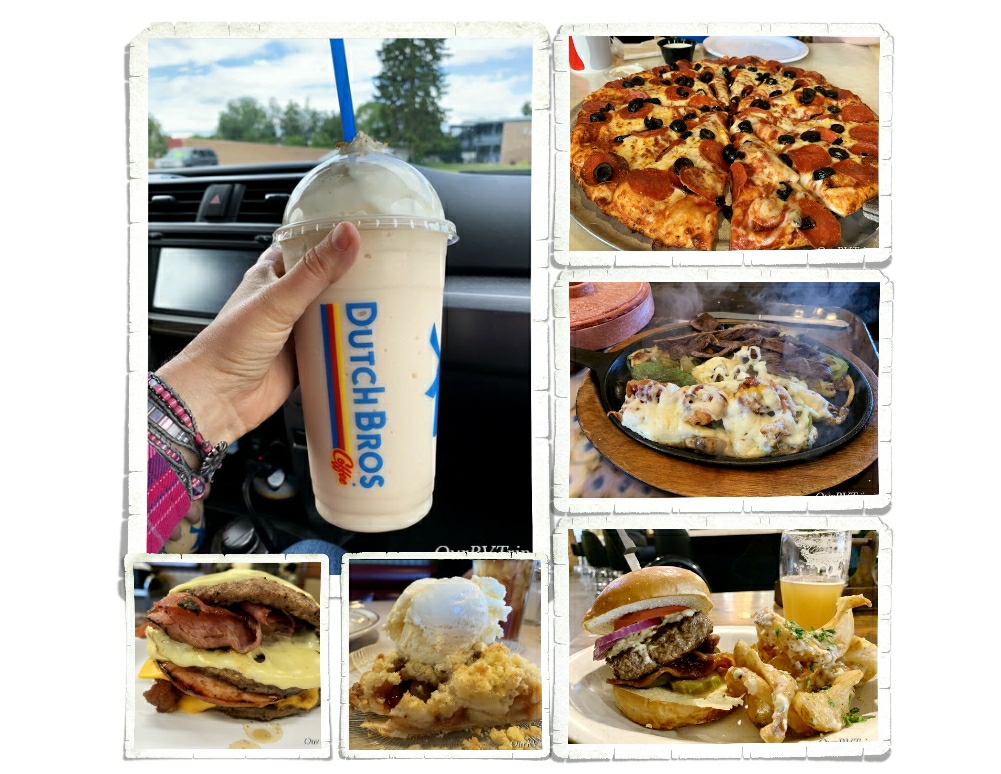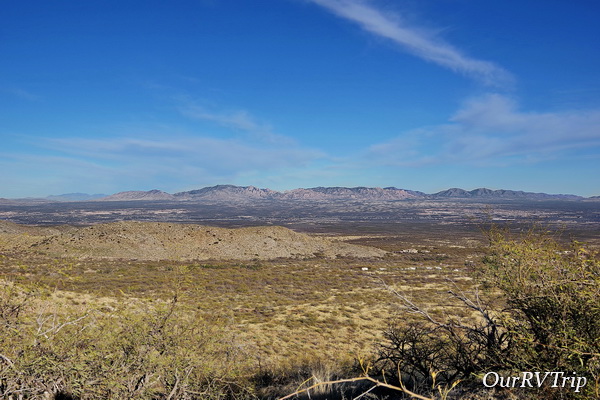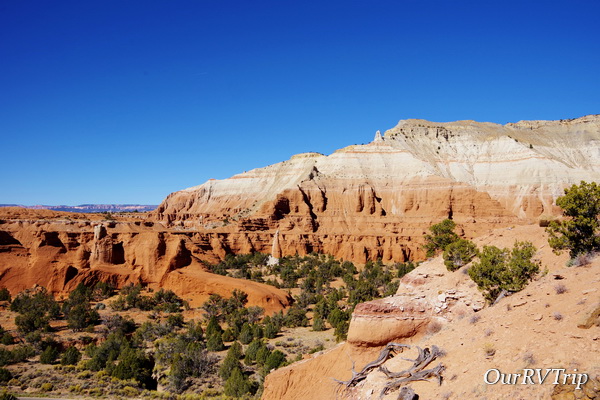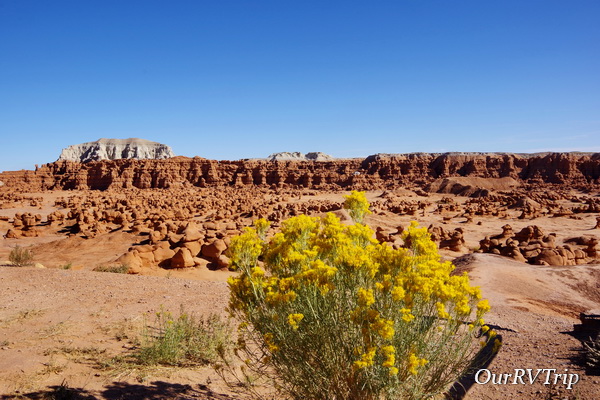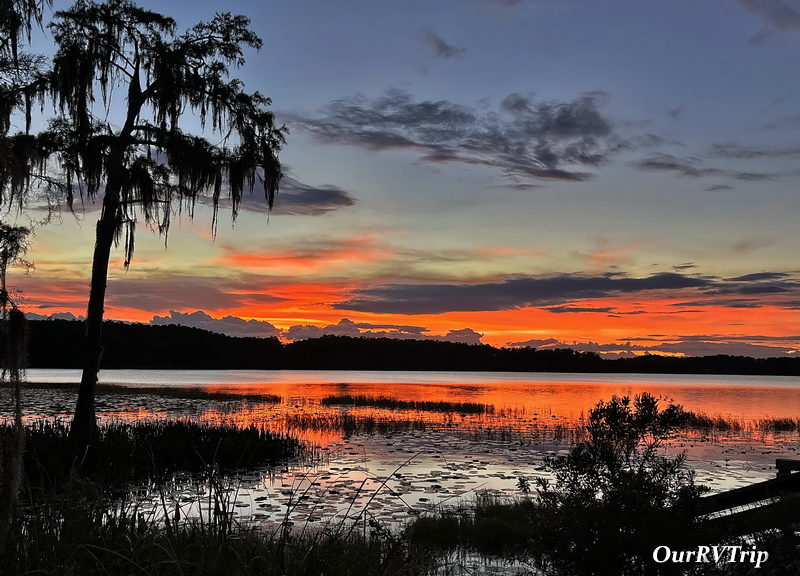
Family Fun in Florida
Hey Guys! Somehow…I’m not sure how…I talked Jerl into another round of Universal Studios and Disney before we wrap up this year’s travels. On our way from South Carolina to Florida, we made an overnight stop in St. Mary Georgia.
I couldn’t resist taking a pic of our home-on-wheels with the beautiful hanging Spanish moss at our spot in Georgia. We don’t usually get to an overnight spot and then do anything, but we spotted something we couldn’t pass up on our way to the RV park…
Tabby Sugar Works or McIntosh Sugar Mill…depending on where you look for info… was built by John Houston McIntosh sometime around 1825…again, this is fuzzy and depends on where you look for info. McIntosh installed the first horizonal cane mill worked by cattle power.
Honestly, I just wanted to have a look at some cool looking ruins. And they were pretty cool! Unfortunately, all of the mosquitoes in the state of Georgia were there to greet us and try to get a free meal. We didn’t stay long. We were all super itchy after that.
When we head to the Orlando area, we always stay at Lake Louise State Park in Clermont. It takes planning because the park books up about a year in advance…especially if you’re wanting to snag one of the few full-hookup spots…but it’s so worth the effort. This time we saw some new things at the the SP! They’ve got these really cute “glamping” tents set up. It looks like they’re equipped with AC and they’re really close to the bathrooms. We also found that they’re offering guided horse rides! We’re usually in the area in the off season…so I’m not sure if these things are actually new or if we’ve just never been there while they were available. Either way, it makes Lake Louise SP an even better option when staying in the Orlando area.
One of our favorite things to do in the evenings while staying at Lake Louise SP is walk around and look at the different ponds/lakes. There are four that you have access to…three that you can easily walk to from the campgrounds. You can rent kayaks, canoes, and SUPs to get out on the water.
Just watch out for the residents. I’m pretty sure people feed them…which is a big no no…because they’ll follow you around on the docks as if they’re waiting for you to drop some food over into the water. Guys, don’t do that. Don’t feed wildlife. Gators aren’t smart enough to differentiate between the hand giving them food and the food itself. Once wild animals associate food with humans, they get dangerous and often times have to be killed. Let wildlife stay wild. They can get their own food.
I know I’m always talking about sunsets…but check out these sunrises! We caught a few while we were heading to the various theme parks and decided to get up early a couple of other days and head out to the docks to catch the sunrise there. It didn’t disappoint. It’s not something I’m going to get in the habit of doing…I’m not a morning person…but I might try to get up early once in a great while just to catch a sunrise.
Maybe.
We’ll see…don’t hold your breath.
The real reason we went to the Orlando area was…Harry Potterverse…aka…Universal Studios. We are, and will forever be, Potterheads. Always. I didn’t get very many pics during our two days at Universal, but we had an amazing time hitting all of our favorite rides and finding a couple of new favorites! Someone was kind enough to take our picture in front of Hogwarts…this is tradition for us, but sometimes it has to be a selfie.
This probably won’t surprise you, but we spend 95% of our time in the two Harry Potter sections of Universal. One of our favorite rides is Escape from Gringotts. I’m pretty sure we rode this one the most this time. The wait times were kind of ridiculous at times. We usually visit Universal during the off season…either in between Thanksgiving and Christmas or in mid January/early February. The temps are fantastic and the crowds are pretty much nonexistent. We went in October this time and Guys, it was a totally different experience.
We were super excited to ride the newest Harry Potterverse ride…Hagrid’s Motorbike Adventure! Universal does such an amazing job at designing ride cues. When you’re waiting in line for a ride, there are so many things to look at, listen to or watch that go along with the ride. It’s all part of the ride. You actually start the journey before you actually get on the moving coaster and Hagrid’s is no different. This is such a great ride. It’s an actual coaster but just tame enough that our kiddo who refuses to ride coasters (Nicholas) will ride it…in fact, this is his new favorite ride…which shocked us all since it goes really fast, has some super dark spots where you can’t really see anything, and goes backwards. All things he isn’t too keen on, but he loves this ride.
Butterbeer is a required treat while visiting Harry Potterverse.
Required. Non-negotiable.
It has to happen.
End of story. Thank you very much.
But, butterbeer isn’t the only yummy drink offered. We took some time at the Leaky Cauldron and each got a different drink so we could have some of them all. Plus, we got to sit down in the AC…and when it’s 90+ degrees outside…that cold drink and AC was totally worth the moola!
I will never get tired of visiting Harry Potterverse. In fact, we were discussing how the park should expand the Potterverse sections and how they should go about doing it while we were there. If anyone from Universal Studios is reading this…reach out…we’ve got it all planned for you!
I would be perfectly content to find a shady spot to sit with a butterbeer in hand and just people watch all day in the Potterverse sections. Now, that said…I do have one complaint from this visit to Universal Studios…well, actually two…the rides broke down way more than usual and the selection of souvenirs was slim pickings. I know both of these things are due to current situations found in our Country right now, but I feel like these particular issues could have been foreseen and fixed by using American made products by American brands found here in America. So…Universal Studios…step it up and support your Country while making your brand even better.
We spent two very full days at Universal Studios…so, of course, we took the opportunity to enjoy some foodies!! We always hit up VooDoo Donuts. We found Hotdog Hall of Fame during our last visit to Universal and enjoyed it enough that we went back this time. The dogs didn’t disappoint! We’ve had more than our fare share of hotdogs…some we wish we’d never had…but all of the hotdogs we’ve gotten at the Hotdog Hall of Fame have all been really good. We also hit up Bubba Gump’s for the first time during this visit. And Y’all…I wish we’d gone sooner. It was such a fun place and the food was top-notch!
We are reluctant Disney fans. Reluctant because Disney as a company has made some very shady…very questionable…absolutely avoidable choices lately. If I’d known about some of these choices before I’d purchased our non-refundable, non-transferable tickets…we would have skipped Disney this visit because like I said before…We are Potterheads. And Universal is our home Park. That being said…we had the tickets, we had the reservations…so we went. Grudgingly, but determined to have a good time despite our misgivings about Disney as a company.
We only went to Disney for two days this time. One day at Hollywood Studios and one at Epcot…the two Disney parks we like the best. It was October and 90* and there were a gazillion people there. It’s a real number…gazillion. We’d never experienced Disney in these conditions and I have to say…we never will again. The lines were insane. The fact that we had to wear a mask on the rides was ridiculous. And the rides kept breaking down.
Now, I know you’re going to point out that I said the rides at Universal kept breaking down this time too, but at least at Universal we didn’t have to wear a mask…at all…not once. Disney not only required masks any time we were inside, the mask had to be a specific type of mask and the mask had to cover your mouth and nose the entire time. Some of us have trouble with masks…especially in heat and humidity.
The main reason we went to Hollywood Studios was for the Star Wars stuff and that’s really where we spent the majority of our day. We did ride a couple of other rides in other areas…but we kept finding ourselves back in the Star Wars sections. There were two new Star Wars rides for us this time…Smugglers Run and Rise of the Resistance. Both are great rides. Both broke down so many times during the day. I was surprised by the lack of story telling in the Rise lineup. It was pretty basic. I also didn’t like being required to be a part of the ride…I don’t want to be a part of the show, I just want to be entertained. Other than that…Rise is a totally different kind of ride and I see it as the beginning of a new era for the 3D/4D rides. Disney has always been on the cutting edge for this kind of tech and they’ve, once again, really delivered. Smugglers is unique in the way you’re each given something to do with the ride…if you want to.
Let’s talk about the blue milk. I’d seen someone mention this stuff on the Socials before we went and I’ll admit I was both repulsed and curious at the same time. When we were standing in the Smugglers line, the family in front of us had some so I asked them about it and based on their reaction to it I figured we should probably try it. It was an unexpected treat that the blue milk is actually dairy free. Since we have a kiddo with a dairy allergy, that was huge for us. So often, he’s left out. So, kudos to you Disney for making a popular treat that everyone can have! The blue milk came in two variations…blue and green. Only Alex got the green one…green is his favorite color. They taste pretty much the same…which is kind of like a fruity smoothie. And for those of you interested…there is an adult version of this treat and yes one or two of us got it and thoroughly enjoyed it.
One of the things I really love about Disney is the foodies. Each season there are new foodies thought up by top chefs to try in each park…there’s also all of the usual amusement park fare but even that is leveled up. It’s not just a hot dog…it’s huge and covered in some really good chili and cheese on a freshly baked bun. Did you know all of the rice crispy treats are made freshly in a Disney kitchen?
We ended up having a better time than we thought we would. Even with the heat and the gazillion people. Disney has a way of sucking you in…I think it’s their superpower. Its a little annoying.
Alex decided to get a little souvenir. It’s a cool Mandalorian helmet. I have no idea where we’ll put it in our home-on-wheels. But, he couldn’t pass it up.
Our second day at Disney was at Epcot. The magic is in the little details. There are eleven lands to explore and an outpost that looks like they should just officially call it Kenya and make it land number twelve. You’ll find foodies and shops in each land. Some lands have a show…like Norway with the Frozen show or France with the new Remy ride. You can spend all day just moseying around the world without actually leaving Orlando.
Up at the front of the park it’s all about space and tech. There’s a new space ride that takes you through a “training” run to become an astronaut. You have two levels of intensity to chose from…Green takes you around the world while Orange takes you to Mars. This was another new kind of ride…you actually feel like you’re pulling Gs as you blastoff. It’s crazy. We went right at the beginning of the day and basically walked right on the ride with no waiting. I noticed later in the day there was a hefty wait to get on.
Did you know Epcot has four different festivals throughout the year? Festival of the Arts (this is the one that’s usually happening when we’re at Epcot), Flower and Garden Festival, Food and Wine Festival and the Festival of the Holidays. In October you’ll find the Food and Wine Festival. We ate ourselves silly. I mean, that’s the point of going, right? To eat all day? I think we got something from almost every land…and quite a few of the little kiosks that represent different countries.
When we first got to Epcot that morning, I found these little trays that hold your food and a drink. It was a lifesaver! We could walk and eat at the same time. As cool as Epcot is…Disney could really invest in some more seating and some shade. There were so many people there that day that we spent most of it on our feet and in the sun. These little trays let us keep moving or stand in a little spot of shade.
So, the new hot ride at Epcot is Remy’s Ratatouille Adventure. The first thing you need to know about it, is that to ride it…you have to do the Virtual Line through the Disney app. You’ll want to have it before you go and have it linked to your tickets and reservations so you’re able to try and get into the virtual line. You have two tries to make it in line. 7am before the park opens and then once more at 1pm. If you miss it…too bad, so sad…no ride for you. Once you’re confirmed in the virtual line, you get a group number and then you wait for your group number to get called before you go get in the actual line. It’s a clever system, but I feel bad for those that don’t know about and miss out. The actual line moved pretty quickly…I think we stood in it for maybe forty-five minutes. That’s not bad at all since we stood in the Rise of Resistance line for three hours while we were at Hollywood Studios. The ride itself uses the same new high tech system that Rise uses and takes you right into Remy’s world as a mouse. You skitter your way through the world and get a mouse’s view of everything.
Disney World is celebrating it’s 50th anniversary starting Oct 1, 2021 and running through March 2023. That’s a full eighteen months of party! Each park has it’s own celebratory thing, but all parks have these cute golden statues. We had a good time looking at all the 50th celebration stuff.
Epcot at night is the best Epcot. The lights are beautiful. The big globe has new lighting that Disney has coordinated with music. Out of all of the Disney parks, Epcot is our favorite.
We managed to slip in a date night. We found a burger place called D-Luxe Burger at Disney Springs. These burgers were huge! The fries were a little weird, but the burgers were spot on. There’s no shortage of foodie spots in the Orlando area.
That’s pretty much it for our two weeks in Florida. We rode all the rides, ate all of the foodies…and saw some epic sunsets…and sunrises!
Until next time, Florida!
See y’all down the road!
#NationalParkTour
